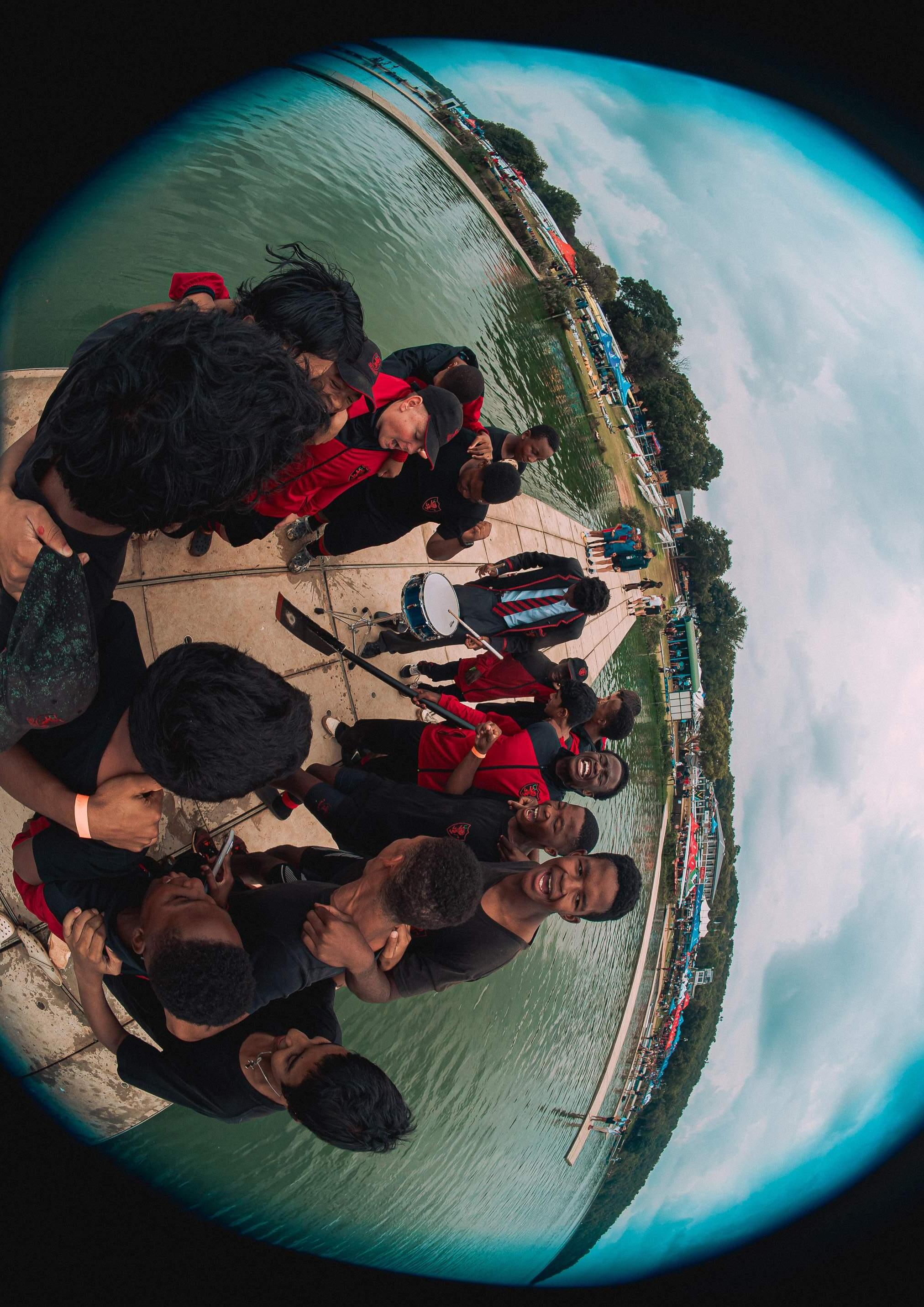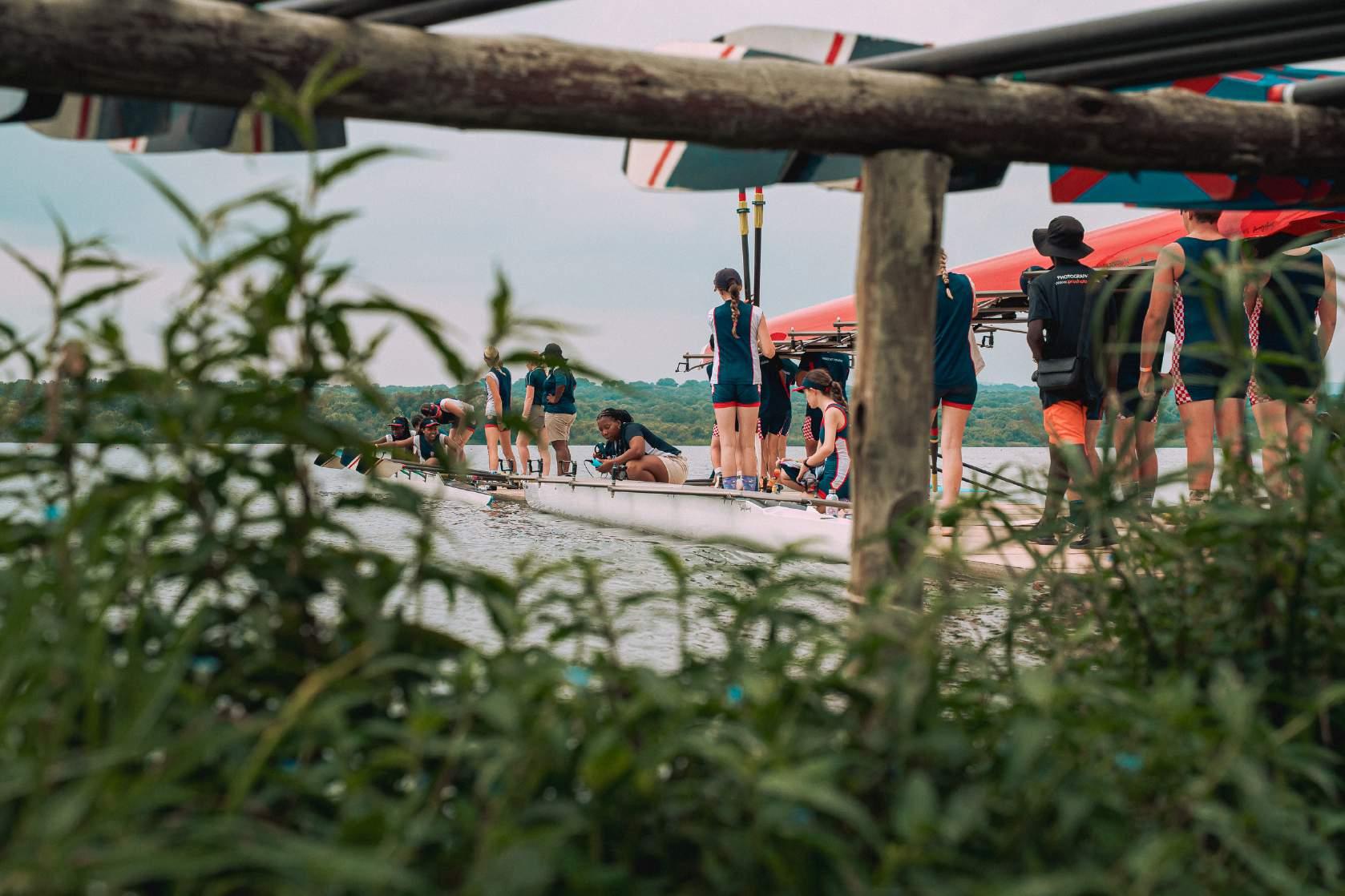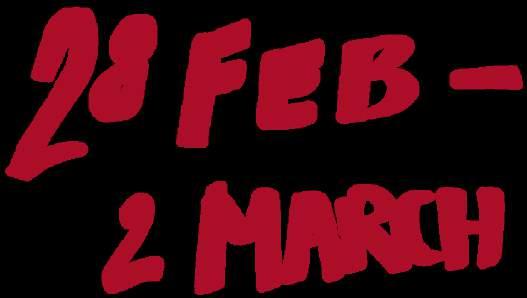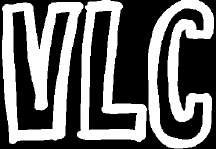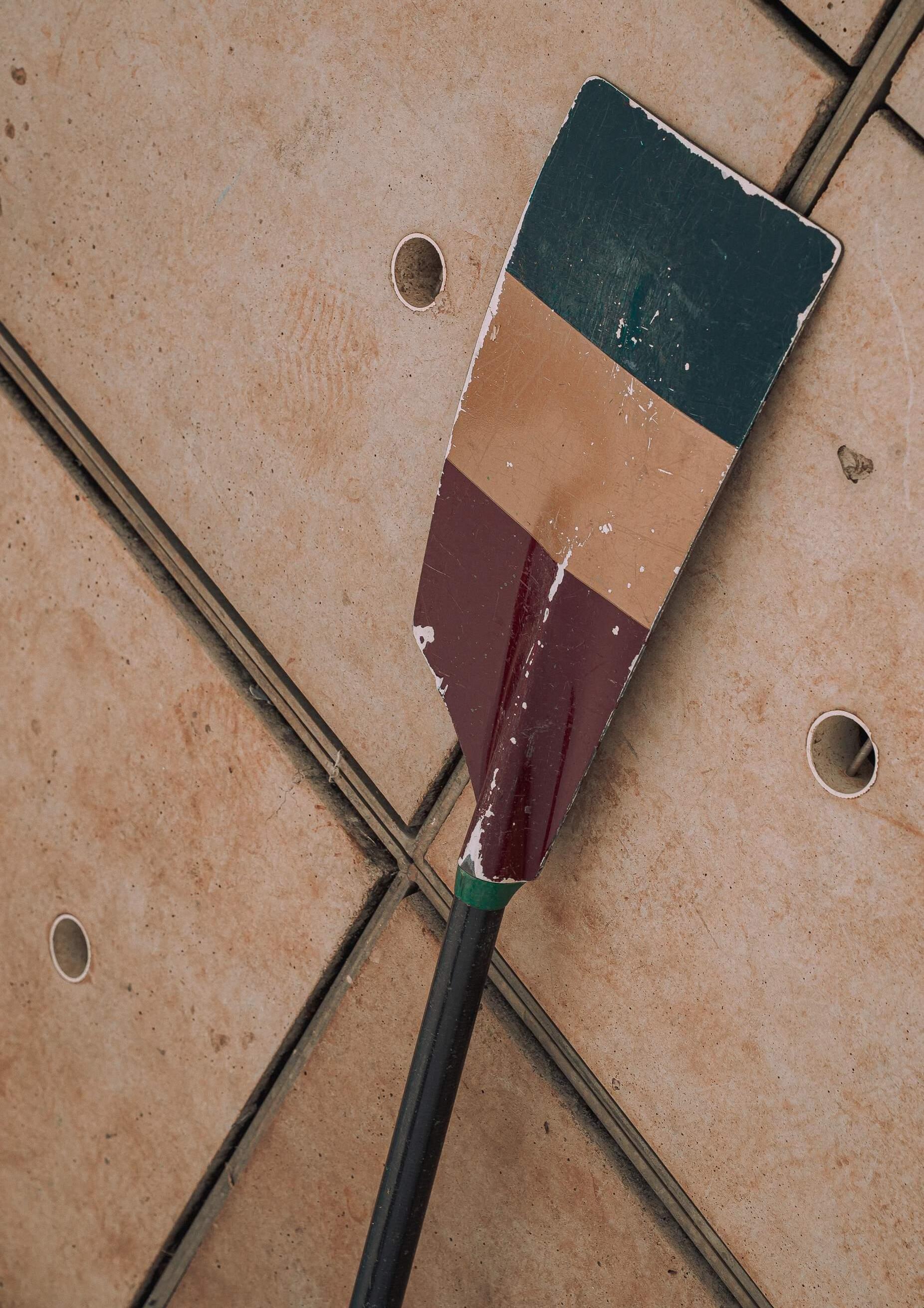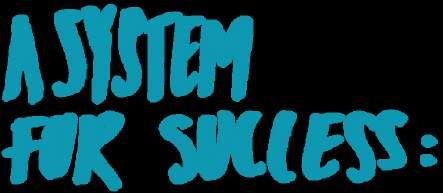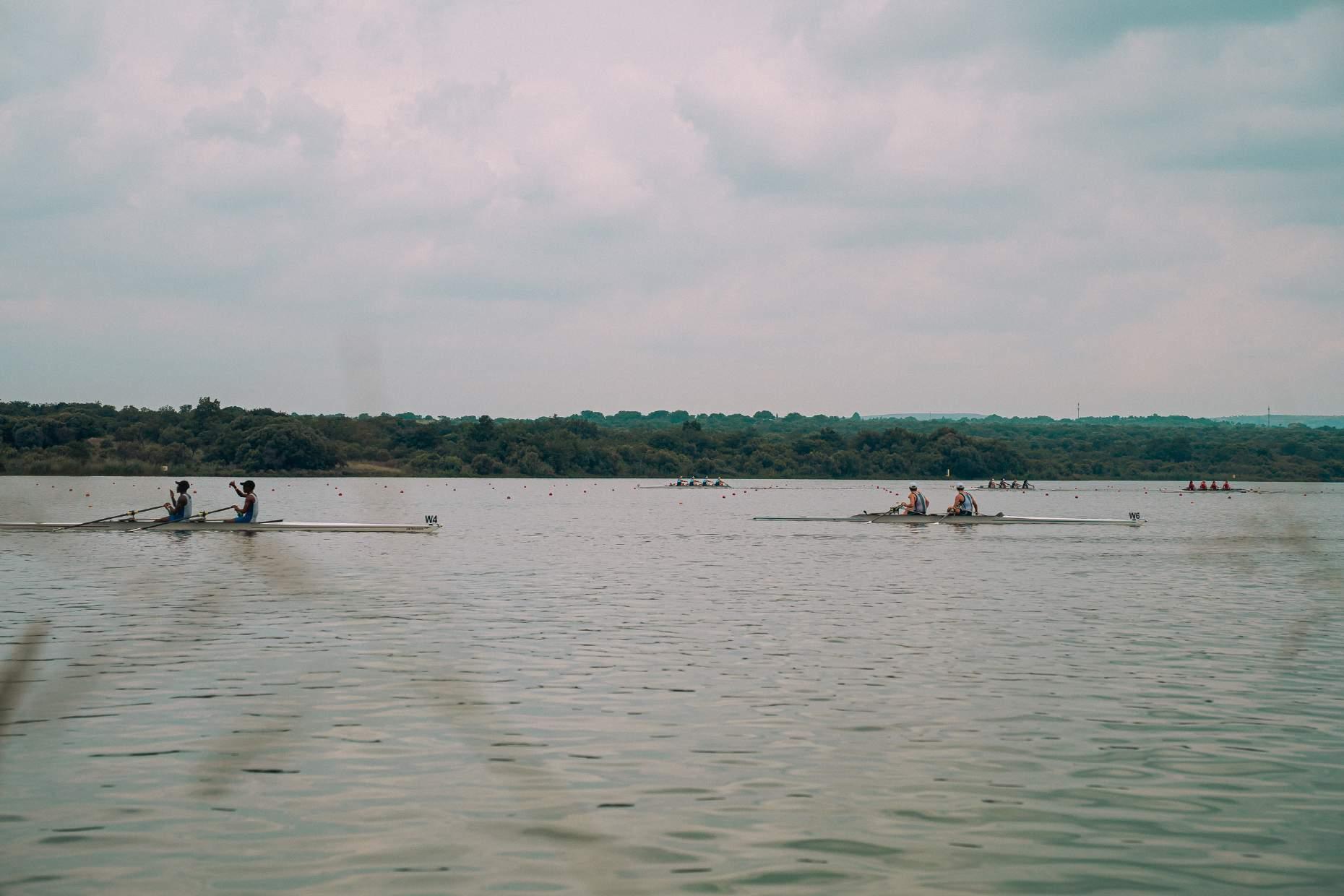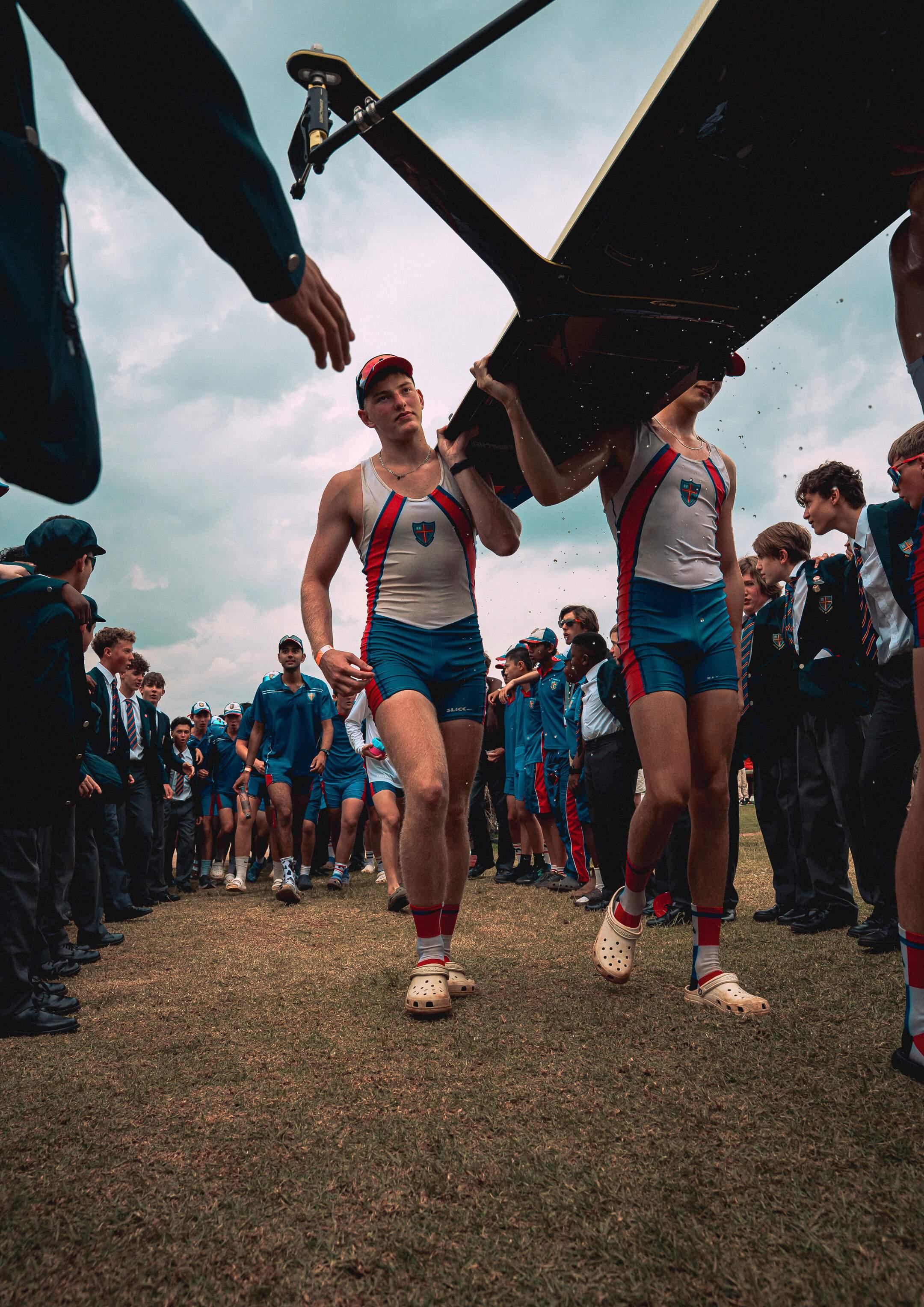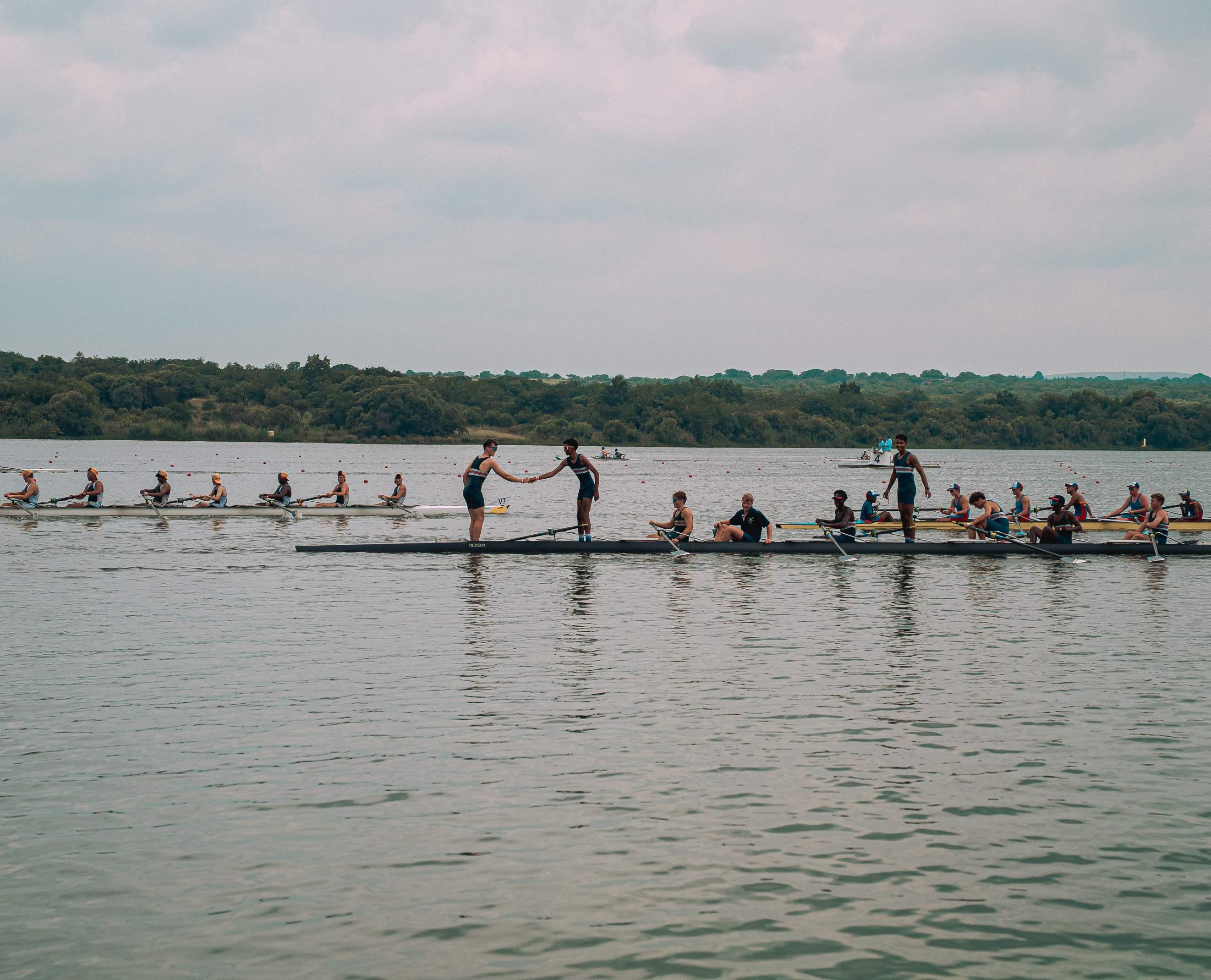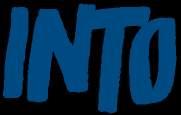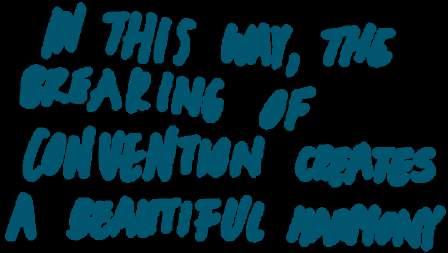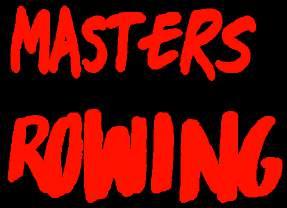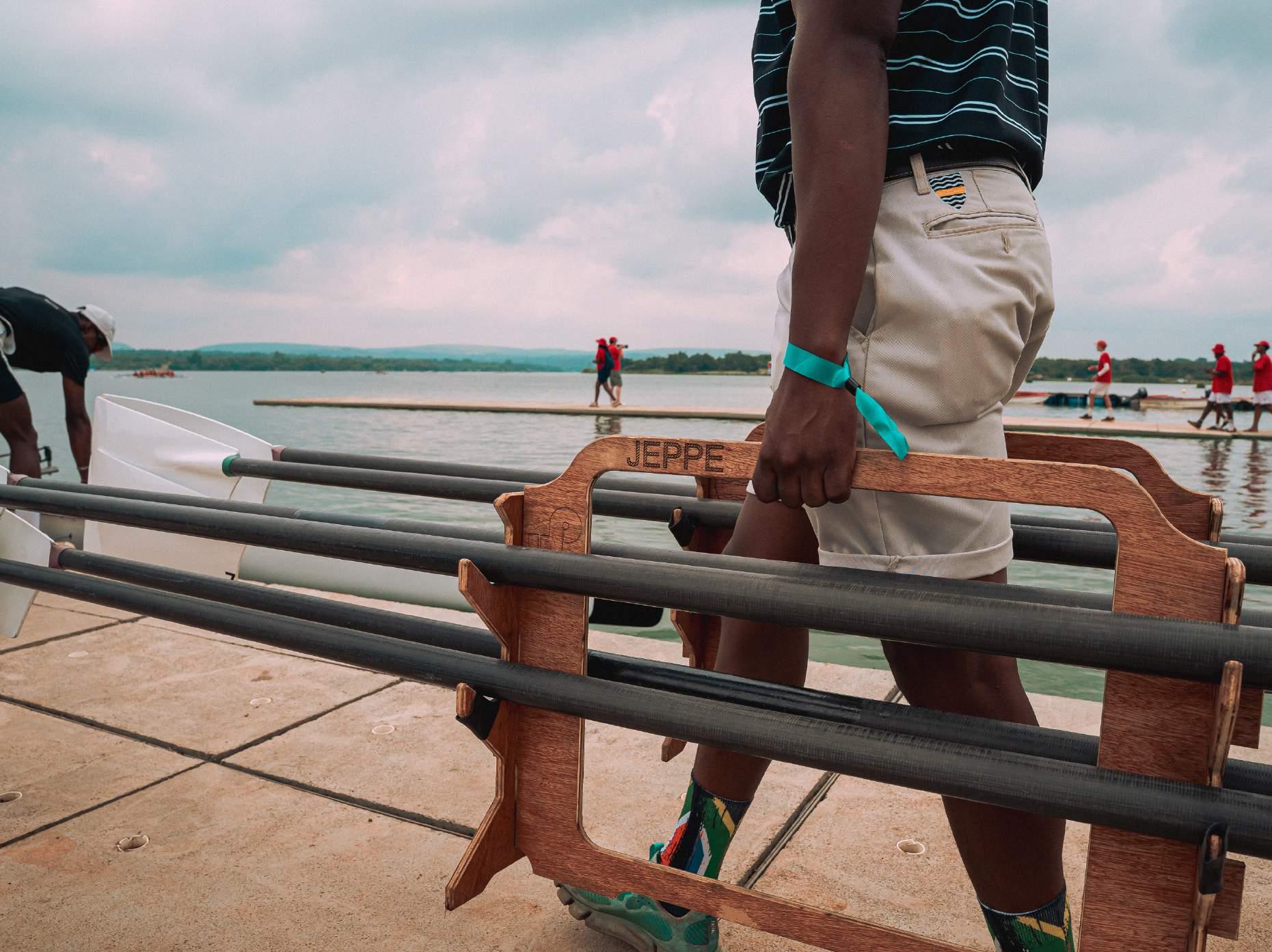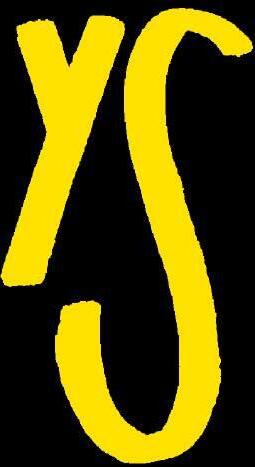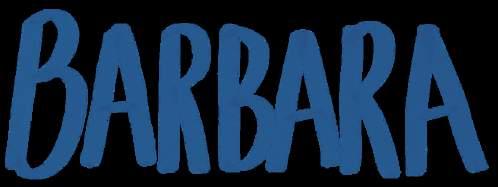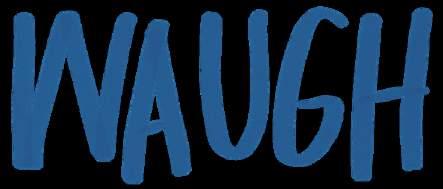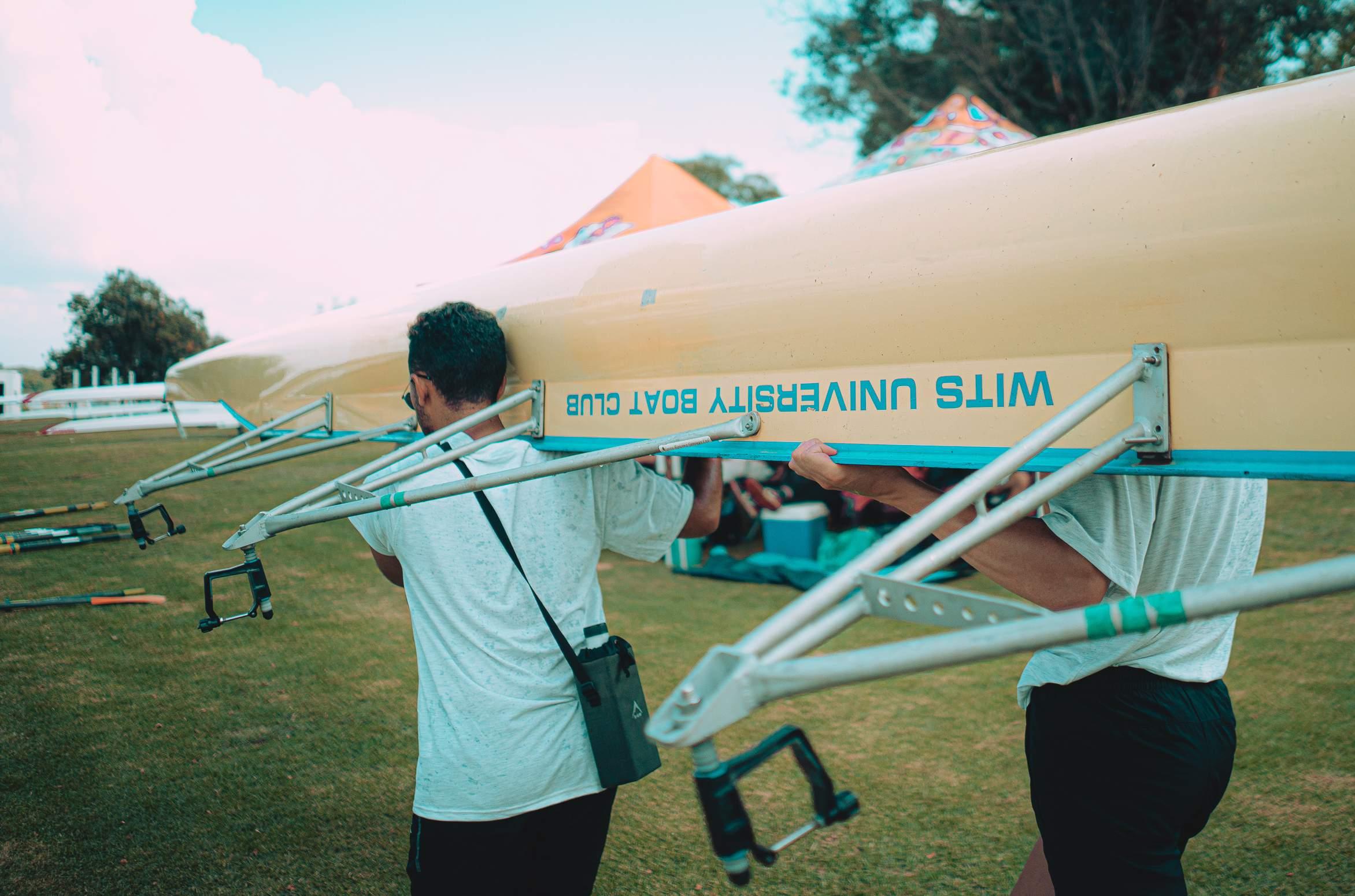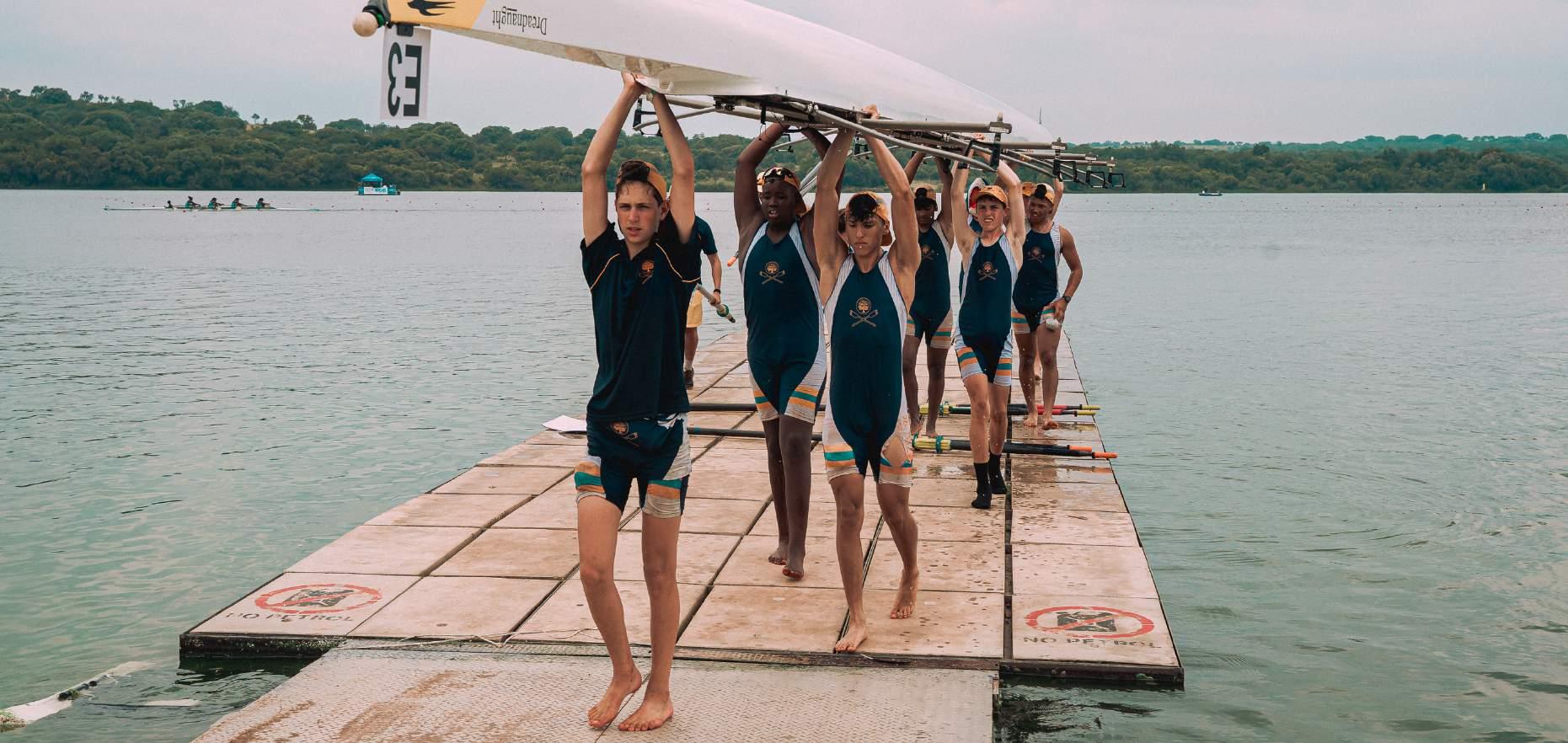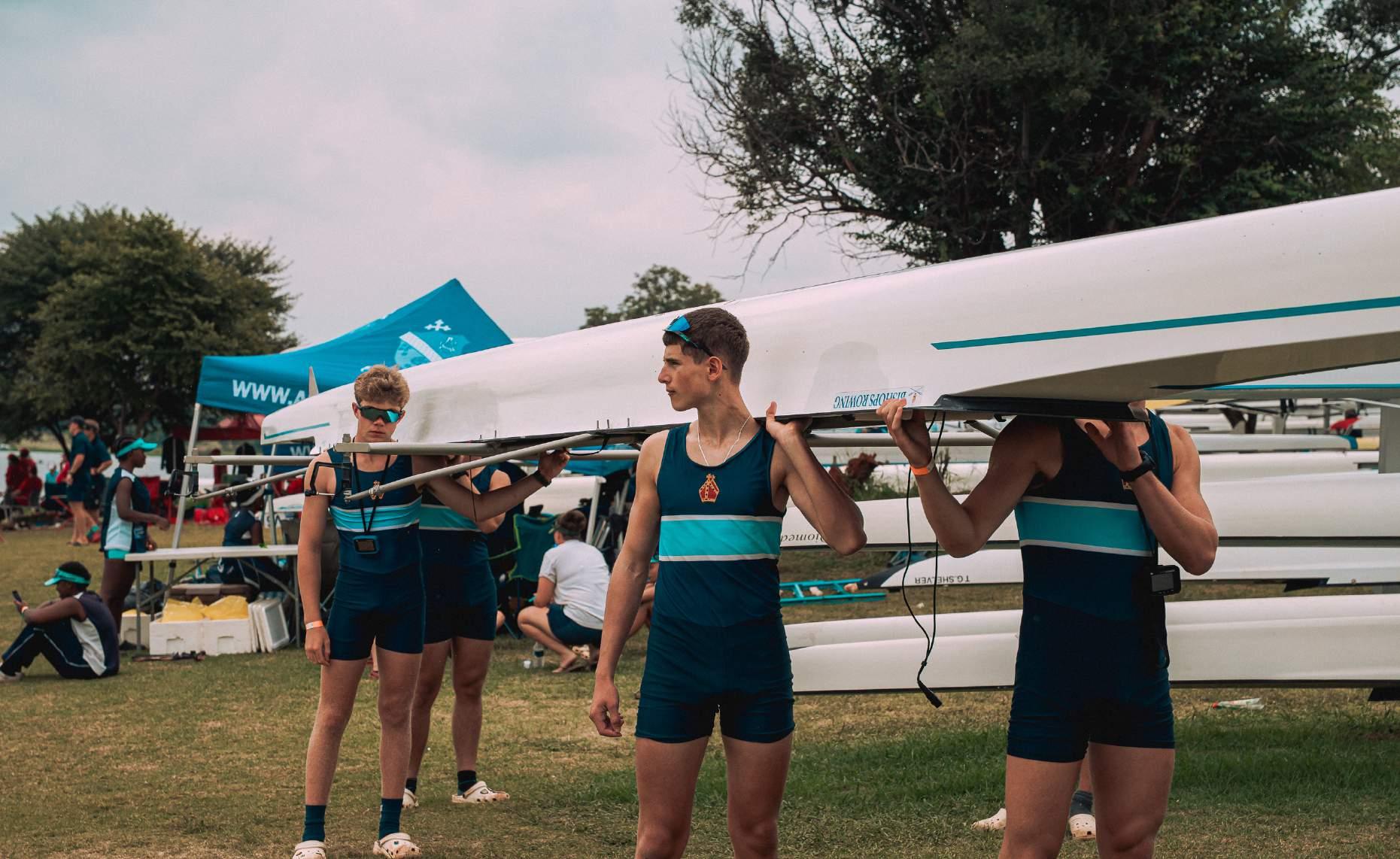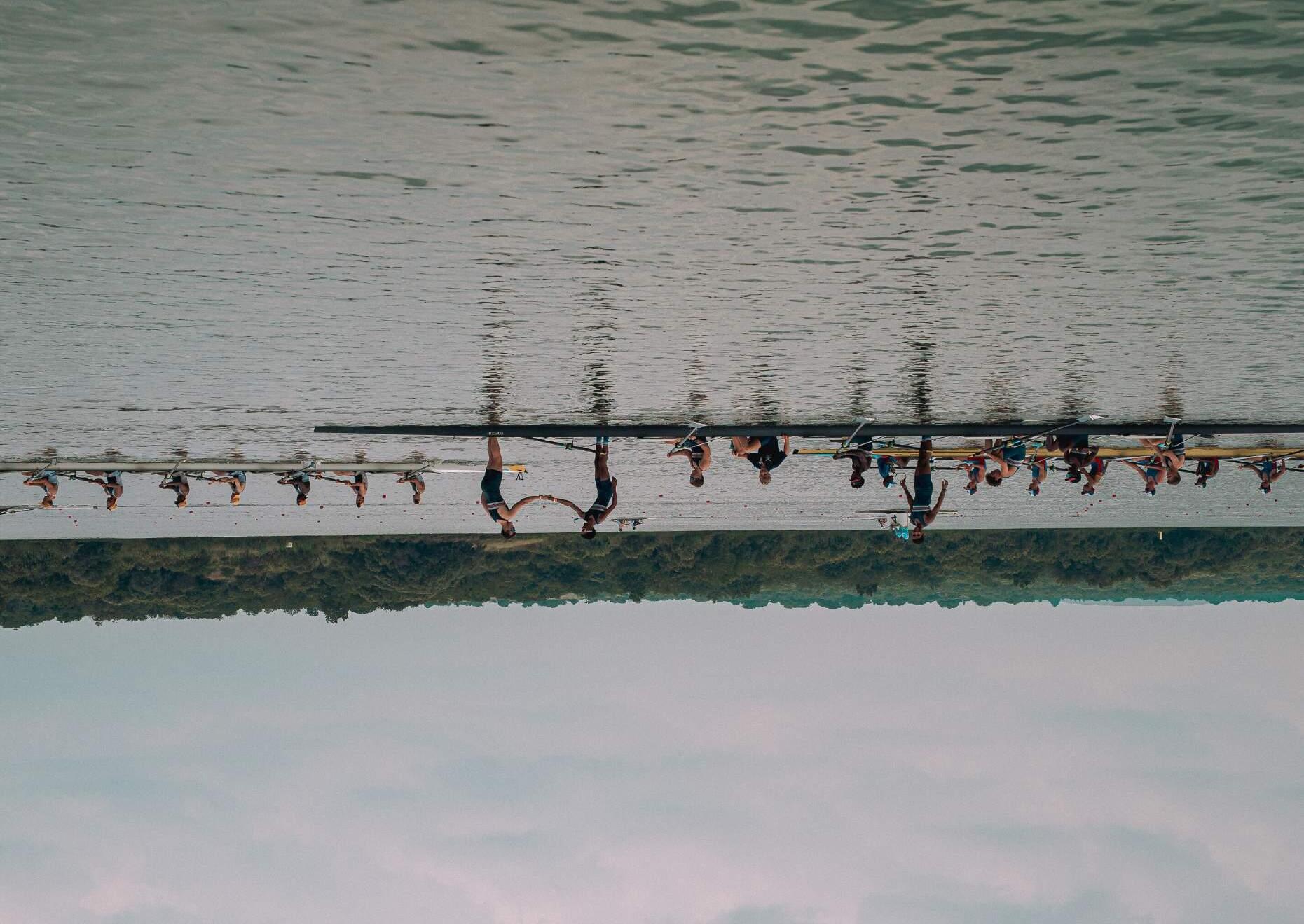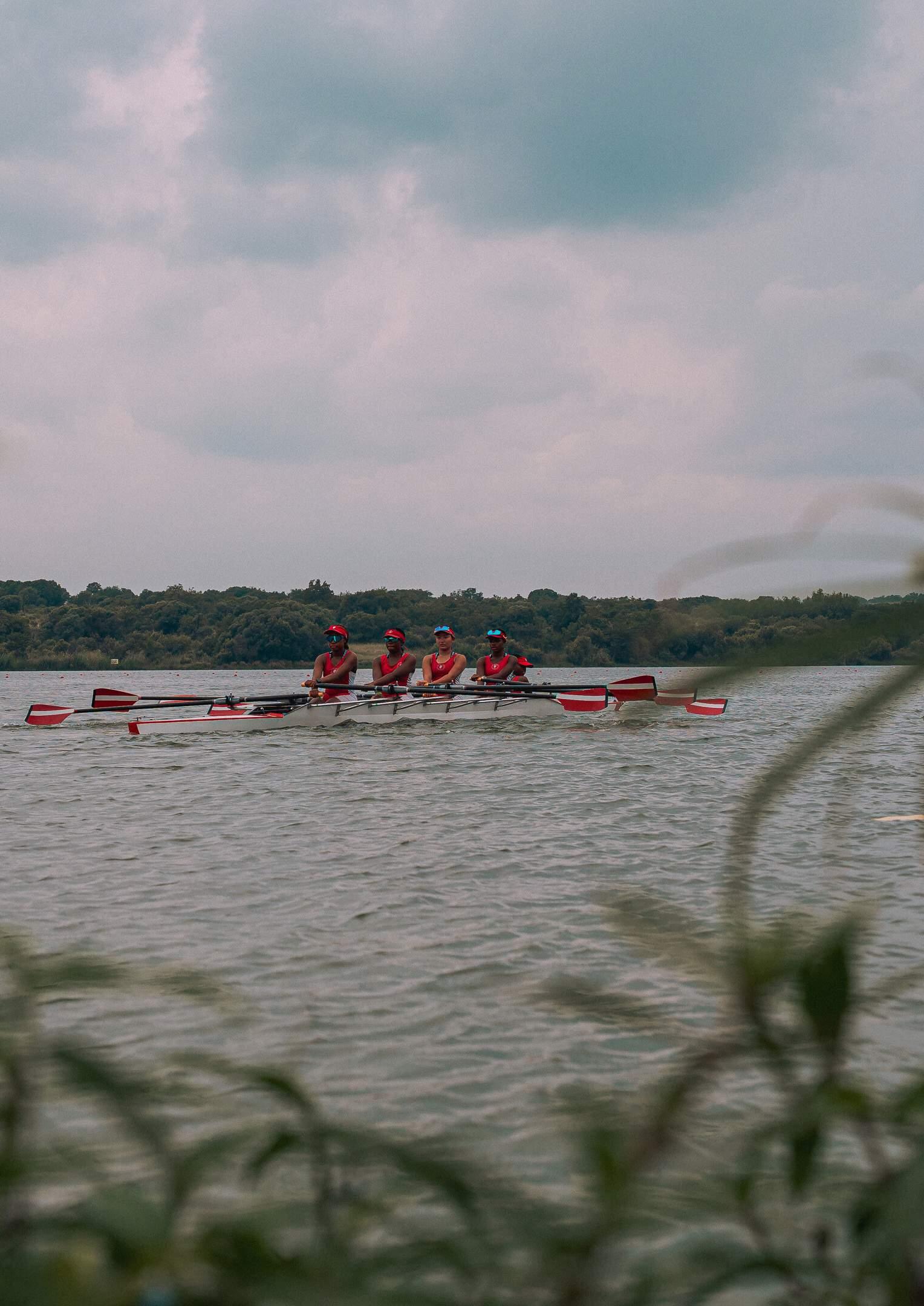Designer’s Note.
Rowing is a sport of grit, patience, and unwavering determination so is running a business For Sandro Torrente and Henry Torr, their journey from rowing teammates to business partners was as natural as the rhythm of a perfectly timed stroke What started as a way to stay fit in high school, quickly became a life long passion, shaping both their athletic and professional paths
Today, that same drive fuels YAAWK Coffee, their specialty coffee roastery that’s making waves both in and outside of the rowing community
Sandro and Henry’s paths to rowing were similar both started in high school, drawn in by the sport’s intensity and the camaraderie it offered Sandro, attended St Benedict’s, and initially played rugby before realizing his natural ability on the water Henry, who attended St. Andrew’s in Grahamstown, was also a strong track athlete alongside his rugby background Once they found rowing, there was no looking back.
The years that followed were filled with defining moments Henry recalls the thrill of winning SA Champs in 2017 and achieving strong results on the Kowie for Tuks in 2019
Internationally, competing in Sarasota in a fiercely competitive boat was an unforgettable challenge, and securing a medal at World Cup 1 in 2023 was a hardearned victory Those races tested his endurance and mental toughness, sharpening the skills that would later be essential in the business world
Sandro reflects “It’s about working with people, learning patience, handling criticism, and just pushing through when things get tough ”
The countless early mornings and exhausting training sessions instilled a sense of resilience that translated perfectly into business page 3
For Sandro, winning SA Champs in the 8+ in 2016 and Boat Race with Tuks in 2019 were standout moments domestically On the international stage, his bronze in the junior men’s pair at Junior World Champs and another in the men’s four at World Cup 3 in 2018 marked major milestones
While rowing took them around the world, another passion was brewing coffee
Inspired by their travels and a shared love for specialty coffee, the idea to create something of their own started percolating In 2023, YAAWK Coffee was born
As a specialty coffee roastery, YAAWK supplies both businesses and individual coffee lovers, offering expertly roasted beans that reflect their dedication to quality “We wanted to build something together that wasn’t just about coffee but about doing something meaningful, just like rowing has been for us,” says Henry
Starting a business was no easy feat The first year was filled with lessons many of which mirrored their experiences in rowing “We were naive and inexperienced, but rowing teaches you to be stubborn in the right ways You have to keep grinding, keep pushing, and eventually, the results start showing,” Sandro explains
That mindset patience, persistence, and resilience has been key to YAAWK’s success Every batch of coffee they roast carries the same attention to detail and pursuit of excellence that once went into every stroke on the water, with the same meticulous approach of analysing every technique and fine-tuning performance, defining their craft as roasters
Even with business keeping them busy, rowing remains a central part of their lives Training is still part of their routine, and when the opportunity arises, they’re ready to race But beyond their personal involvement, they want YAAWK Coffee to play a bigger role in the sports world
“One of our big goals is to grow the business to a point where we can fund athletic development whether that’s supporting rowers or other talented athletes,” says Henry They envision YAAWK not just as a coffee brand, but as a force that gives back to the sporting community that shaped them
For young rowers, their advice is simple but powerful: “Don’t be afraid to dream. People are quick to tell you to be realistic, to let go of sport for academics or a ‘proper’ career. But if you love something, find balance and chase it.”
Website: www.yaawkcoffee.co.za
Follow us on: yaawk coffee roasters/ YAAWK Coffee (Instagram & Facebook)
Whether it’s on the water or in a cup, Sandro and Henry believe in quality, perseverance, and the pursuit of something truly special. If you’re in the rowing community or just love great coffee YAAWK is worth a try.
First and foremost, I would like to extend my congratulations to the team behind The Bowside, our new publication (not so new to the Kudus, but to everyone else) Your creativity and courage in launching this magazine are commendable
The Bowside is more than just a publication; it is a symbol of the innovative and entrepreneurial spirit that we foster within our rowing community Your initiative also speaks directly to two of Rowing South Africa (ROWSA)’s priority themes: ensuring healthy communication and fostering an innovative entrepreneurial mindset.
Once again we have enjoyed and celebrated a remarkable season for our schools and junior clubs, which has given us a clear understanding of the type of individuals our sport develops Rowing instills resilience, hard work, determination, and teamwork qualities that are essential for nurturing future-fit citizens who can positively contribute to society Our sport serves as a great incubator for these attributes, and we are proud of the young athletes who embody these values.
For those taking a break, enjoy your winter sports, keep fit, and come back stronger next season For those working towards selection for the SASRU and U19 squads, all the best! This is the pointy end, it is tough, but that is why we cherish the Green and Gold





As we look to the future, we have several key priorities Through our newly established Commercial Team, we aim to build a compelling narrative to raise, and generate, funding A crucial part of this initiative is relaunching the Trust, with the ambition of creating an endowment that will aid us in professionalising the administration of the sport and ensuring its sustainability for many years to come With this goal in mind, we plan to build a global network of influential personalities, bringing them together at highprofile rowing events to shape the commercial future of our sport If you believe in the power of sport as a nationbuilder and share this kind of passion, we invite you to make contact with this great team at vicepresident@rowsacoza
Linked to this, is the equally important priority of ensuring that ROWSA is well-run, which speaks to good governance Our goal is to be the best-run sporting federation in the country and leverage this fact to establish meaningful partnerships with key industry and other stakeholders Strong governance will lay the foundation for us to have more fun and achieve greater success.
For the y ar good luck! As r as importan se to get back in a
Whether it is supporting our athletes in their dreams to compete at World Championships and the Olympic Games or continuing to build this great, happy rowing family through incredible festival-like regattas, including our coastal rowing program and indoor rowing championships, we are committed to fostering a positive and inclusive culture
We need to connect with rowing communities across the country, energising and motivating one another whether it is by getting in a boat or being part of a parents' committee Our path forward requires innovative thinking, bravery, and sufficient caring and consideration for the diverse backgrounds within our rowing family
In March, I was fortunate to attend the World Rowing Quadrennial at the home of the Olympics in Lausanne, Switzerland My greatest takeaway was that, as a global sport, rowing is in a good place with solid leadership. At a dinner, attended by various IOC members, they pointed out their strong relationships with World Rowing and congratulated everyone on how well WR was run, highlighting the culture of mutual support they had experienced while talking to all the national rowing federations It was also noted how many former rowers now serve in key positions within the IOC
While talking to the various WR leadership from the Athletes Commission to the new Head of the Officials I realised that we need to do more to support World Rowing I encourage those looking for a new, exciting, international chapter in their lives to inquire about how we can participate in various commissions and potentially look to play more senior roles within WR in the future
There were many lessons to be learned in this environment, but one that stood out to me was from discussions with high-performing countries like the Netherlands and New Zealand It became clear that while they are incredibly professional and run their sports like well-run businesses, their success ultimately comes back to fostering the right culture Dutch Rowing President, Seada van den Herik, kept mentioning how much fun the Dutch university students have, (noting that the majority of their top rowers only start at university), while Simon Wickham, CEO of NZ Rowing, emphasised developing good, wellrounded citizens.
Congratulations again to The Bowside team The launch of the magazine is exactly the kind of risk we need to take to progress our sport
Let us support each other, celebrate our successes, and learn from our challenges. Together, we can achieve great things and elevate South African rowing to new heights
Cheers,
Another weekend, another competition. This February, rowers from across the country made their way to East London for the prestigious Buffalo Regatta.
In a peculiar tradition, Buffalo begins on a Thursday, but don’t let that fool you: the racing is sensational
where many deserving crews have missed out on finals for not being ruthless enough in their heats.
No such problems arose in the junior women’s U19A single sculls, where Nicole Ledlie, Lucy Taylor, and Amber Potgieter all qualified for the final with relative ease The junior men’s U19A single sculls, however, exemplified the course's brutal nature: six heats of six boats each for just six final spots winning a heat wasn’t even a guaranteed pathway to the final, as Junior SA athlete George Cox learned the hard way
The boys’ 1st eights saw all the favourites progress to the final, chief among them the 2024 Boat Race winners from St Benedict’s College KES continued their resurgence with a strong performance in the heats, finishing second in their heat behind St Stithian’s College.
The girls’ 1st quads event, however, disappointed anyone hoping for shock results St Andrew’s School looked composed as they won their heat, while St Stithian’s (last year’s Boat Race runners-up to St Andrew’s) won theirs in the fastest time St Mary’s School Waverley and the Diocesan School for Girls also secured spots in the final
On Saturday, the event truly burst into life with the first finals
Michael Teixeira of St Benedict’s and Nicole Ledlie of St Mary’s claimed victory in their respective scull events Other standout performances included:
Kristyn Xavier and Jade Burnand of St Andrew’s winning the junior women’s U19 double
Baxter and Bonhage-Koen of Old Edwardians securing the elite men’s pair title
Olympic veterans from Tokyo 2020 Henry Torr, John Smith, Kyle Schoonbee, and Sandro Torrente claiming victory in the Grand Challenge
Chris Baxter narrowly defeating Murray Bales-Smith in the Silver Sculls
Paige Badenhorst triumphing over a strong field in the elite women’s single sculls
Water conditions may have played a role in the blue-ribbon school events St Andrew’s continued their impressive season with a commanding win in the junior women’s 1st quads final, stopping the clock at 6:45
Meanwhile, the junior men’s 1st eights final was just as blistering, with St Stithian’s edging out St Benedict’s for gold in a respectable 5:44.79.
Below: Diocesan School for Girls, making their support clear at SA Schools Champs, 2025
Above: crowded jetties are a familiar sight, even more so on race day
Between the frenzy of races, boat checks and last-minute bathroom trips, jetties are anything but a sanctuary Still, returning to a medal makes that boat a little lighter and your smile a bit brighter
All Smiles on the Podium: St Mary’s School Waverly girls celebrate their medals
As the sun rose at Roodeplaat Dam on the last day of February this year, the metaphorical sun began to set on yet another rowing season The Schools’ Rowing Championships had arrived, and with them, arguably the biggest festival of rowing in South Africa began
This year featured 31 schools and clubs from South Africa and Zimbabwe. Most of the regulars returned, while Live & Learn High School from Harare made their debut appearance Notable misses included Hilton College, which produced Olympian Kyle Schoonbee, and Grassy Park Rowing Club, who had done some wonderful work in developing grassroots rowing in Cape Town We encourage their return at next year’s SA Schools’ Champs
As tradition has it, the first day of the Schools’ Championships saw the sculls and pairs, which are typically raced by the cream of the rowing crop This remained true this year St Benedict’s maintained their stranglehold over the u/14 boys sculling events, featuring four crews in the final, including a gold and bronze medal The u/15 girls from the Holy Rosary School repeated the feat in their final, snagging the silver and bronze medals in a tight final won by Taylor Prinsloo of St Mary’s. St John’s narrowly broke St Benedict’s recent stranglehold over the boys’ u/16 pairs in the final, winning by 0,63 seconds
Holy Rosary repeated the feat in the girls’ event, beating St Mary’s by just over a second Obinna Nnamani, racing out of Germiston High School, brought the fire, winning a brilliant bronze medal in the boys’ u/19 single sculls final
The last race of the day saw Nicole Ledlie finish a fantastic season in the scull with a win in the final, with Lucy Taylor’s no-lessimpressive finish ahead of the three (3) St Andrew’s scullers, before lightning ended the programme prematurely
Saturday started brilliantly with St Benedict’s and St Mary’s winning their respective u/19 pair events St Andrew’s dominated the girls’ u/14 quads, with a comfortable onetwo, while Holy Rosary reigned supreme in the u/15 doubles, featuring three crews in the final, including a gold and bronze medal St Benedict’s cantered to the u/14 octuple title in a new record time St Alban’s continued their dominance in the u/19 quads, winning just ahead of a fast-finishing KES crew
The day would end as it began: St Benedict’s and St Mary’s winning their respective u/19 coxed four finals, and St Andrew’s dominating in the girls’ u/19 doubles events
On Sunday, the St Andrew’s girls came out swinging: They won medals in each event they entered that afternoon, winning all but the u/15 quad
Germiston upset the apple cart in the boys’ u/19 doubles, winning a bronze medal Live & Learn High School took the gold medal in the u/15 double back to Harare
and securing their 31st consecutive overall boys’ win at the SA Schools’ Championships.
St Benedict’s pedigree shone through in the boys’ 1st eights which saw the crew win every major honour on offer, and cementing themselves as the overall girls’ winners
The boys’ events weren’t as straightforward: St Benedict’s surrendered a 10-year winning streak in the u/15 octuple by losing to an exceptional KES crew, before they surrendered a similar streak in the 2nd eights, coming fifth in an entertaining final won by St Stithian’s.
Senior rowing returned with a bang with the arrival of the Isis Engineering VLC Sprints Regatta at Germiston Lake. The rain stayed away on Saturday as the first races, the Men's Elite single sculls, lined up at the start line The main name in the draw was undoubtedly that of Christopher Baxter, fresh from racing at the 2024 Paris Olympics, and eager to cement his spot in the RMB National Squad for 2025. He qualified for the final, which he won in a time of 3:32.
Also making her return following a successful Olympic outing was Paige Badenhorst, returning to race the Women’s Elite single sculls for the first time since Paris. She beat her fellow national teammates, Katherine Williams and Courtney Westley, as well as lightweight dynamo Chloe Cresswell, in a classic final.
So started a fantastic, if windy, day of racing in which the St Benedict’s College athletes continued their trend of dominance as they won the premier u14 events, while surprise outfit King Edward VII School stunned the Bennies boys to win the u15 octuple and close out the regatta for the day
The Sunday contained no great surprises, with the highlight being the reunion of Baxter and Damian Bonhage-Koen, the former u23 world champions (and record holders) in the coxless pair, as they stayed true to form, dominating the field on their way to victory in the Men’s Elite pairs.
The University of Pretoria continued their impressive start to this year with victories in both Men’s and Women’s Elite eights, as well as the coxless fours, on their way to claiming the overall points trophy.
Boats, boats everywhere What did you expect? This is a rowing magazine
St Andrew’s School for Girls put on a masterclass at this year’s SA schools champs:
home not only the most points in the girls’ division and plenty of medals but also winning the JW19
Final ending their open 4x+ season on a high note with their 4 consecutive win th
Taking
4x+
At St Andrew’s School for Girls, success on the water is not just about raw power or endless hours of training it’s about refining the fundamentals and cultivating a mindset that thrives under pressure
Head coach Jamie Croly reflects on a season of meticulous preparation, the challenges of balancing academics and athletics, and the philosophy that helped his crew rise to the top
For Croly, this season’s primary technical focus was crystal clear: perfect the basics. “It’s easy to get sucked into a million details,” he explains “But if you can’t prioritise, everything becomes overcomplicated, and you focus on things that don’t matter at all ” Instead, his athletes were trained to be fully aware of their movements, engaged in every stroke not rowing on autopilot, but rowing with intent.
This approach was evident in their race strategy
Rather than fixating on a rigid stroke rate, the crew learned to row at a specific intensity, adjusting dynamically to conditions
“A 36 in a headwind feels totally different from a 32 in a tailwind, it’s more important to know what you can do and sustain,” says Croly “We can’t change the others; we just have to focus on ourselves, getting from A to B as fast as we can ”
The season went quite smoothly, thanks to commitment and collaboration With a boat full of strong academic performers, balancing rigorous schoolwork with demanding training schedules required careful planning
“We put a lot of work into ensuring they had time for homework, assessments, and exams,” Croly says “A huge part of that success comes from the support of parents, who are just as committed: if training starts at 6 AM, that means they’re there at 6 AM too ” If parents aren’t committed, the kids won’t succeed
Beyond academics, Croly recognises the oftenoverlooked stresses that young athletes face nutritional, financial, social all compounding exponentially.
His role, he believes, is to eliminate as much of that burden as possible, ensuring that when his rowers arrive at training, all they have to focus on is rowing
This year’s quad had a history Three of the girls had rowed together at last year’s championships, where they were overtaken in the final stretch
Two went on to the World Junior Rowing Championships in Canada, while a fourth had spent time in the first quad last season But changes were made after Boat Race, bringing in a rower who hadn’t sculled as much leading to tighter, more hard-fought victories early in the season.
Building cohesion took less time than in crews that were newer to rowing together, still, by SA Champs, they had great chemistry in the boat. “It was a much more controlled race than earlier in the season,” Croly reflects “They became precise, together, cutting out loose ends ”
Training was built on consistency Every session started with slide progression drills, performed in pairs for stability Frequent pauses every 2km in a 10km piece ensured technique was locked in They would do these basic drills until they were perfect, intentional, and everyone was absolutely sick of it
“Drills should never be done mindlessly,” says Croly “Younger coaches often do drills just to tick a box, but they’re missing the point Drills should be about integrating good movement ” Balancing endurance and power was also key “Eighty percent of our work was below the first lactate threshold,” he explains
“The hardest thing is convincing athletes that they don’t need to feel like they’re working hard all the time ” Buffalo Regatta served as a high-intensity race simulation, allowing them to reduce volume leading up to SA Champs without losing aerobic capacity
Croly knew early on that this quad had potential “By September, I knew we had a strong probability of winning,” he admits A specific session on the Vaal confirmed it: “It wasn’t anything crazy, but I told myself, ‘Just don’t screw this up ’” Their race-day strategy was aggressive: a powerful start, a controlled build, then sheer willpower to hold off any challengers By the 1000m mark in the final, they were ¾ of a length up exactly where they needed to be. “At that point, I knew they were set,” Croly says
One athlete’s journey stood out: Gabby Manson, the 2-seat, who had been in and out of the boat the previous season Rather than waiting for her chance, she committed, training relentlessly through the holidays and earning her way back into the final lineup “It’s easy to sit back and wait for next season, especially as a junior, but she showed grit and determination,” says Croly “That’s rare ”
At St Andrew’s, a strong junior program isn’t just an afterthought: it’s the foundation of championship-winning crews Every athlete follows a structured pathway, with each stage of their development carefully supported by the coaching team, the foundation is strong. “Rowing here works because nobody obstructs it,” says Croly
“The U14 coach is one of the most important roles,” Croly emphasizes “That’s where the habits are built, the mindset is shaped ” It seems that if you get that right, everything else becomes easier
Each step of the journey is intentional Younger athletes are coached with the long game in mind by the time they reach the senior ranks, they’re not just strong rowers, but smart, adaptable competitors Croly says that every coach buys into the process because they know these are the kids they’ll be working with next season That continuity seems to make all the difference for these girls
For him, success isn’t just measured in medals, it’s about keeping athletes in the sport long after they’ve left school “I’d rather lose SA Champs and have every girl [in a year] carry on rowing than win and have them hate it,” he says St Andrew’s seems to pride themselves on just that, as many of their girls go on to row in their university clubs, wherever that might be
St Andrews’ 1st 4X+ Coxswain Keatlaretse Kganakga stands up to wave to the crowd with her winning crew: Krissy Xavier (stroke), Jade Burnand, Gabby Manson, and Amber Potgieter, (bow)
With this season wrapped up, the focus shifts to what’s next But Croly is clear every new year is just that: new “You can’t bring too much from one season into the next,” he says.
“Each crew needs to find its own identity, its own way to its goal As a coach, your job is to guide them, not place preconceived expectations on them ”
This season, the program took a bold new direction Training moved to the Vaal, and for six months, the first quad’s boat lived on the trailer “People thought I was crazy,” Croly admits “But it worked The girls loved it And the bus rides to and from training gave them time to talk, strategise, and work through any conflicts ”
As for what comes next? A new season, a new identity, and a fresh opportunity to build something great.
“Prior to the race we were filled with nervous excitement, we were confident in our training and in our abilities as a crew We had put in many, many months of training We all had a shared determination to win, and sheer grit which really helped us push to the end
We were focused and knew that we had to go out hard, to get ahead quickly and kept to our race plan There was a surge of adrenaline throughout the race and we all knew we would not let it go
As we rowed through the finish line ahead of our competitors there was a massive feeling of triumph, exhilaration and pure joy: knowing we had come together to cross the line first Securing gold as the first quad, and completing a winning streak with our fourth win in the major regattas of the season ”
If the girls could pick a theme song for their final it would be: Runnin’ (Lose It All) by Naughty Boy
If Croly could take this quad to compete internationally, he would take them to race in the Henley Royal Regatta Diamond Jubilee, an event with 100,000 spectators lining the banks It’s such an awesome atmosphere, and it would be an amazing experience for the girls “No SA junior women’s crew has raced there before,” he notes
The St Benedict’s College 1st 8+ victoriously leaving the Roodeplaat jetties at this year’s SA Schools Rowing Championships, which took place on the first weekend of March 2025
After a successful first place finish in their brand-new Empacher, Richard truly captured the spirit of Bennies rowing The jubilant chaos that ensued was indescribable Go Bennies!
St Benedict’s College 1st VIII victoriously waving to their tirelessly enthusiastic supporters post-win in the 8+ Final
St Benedict’s College boasts a 31-year winning streak at SA Schools Champs. While their win in the open 8+ can hardly be blamed on their brand-new Empacher unsurprisingly named Gloria Sancti Spiritu, after the third person of the Trinity in their Gloria Patri doxologybased first 8+ naming scheme it must have added spectacularly to the thrill of their performance
We attended their Boat Christening in early January and saw plenty of current students
and their parents, returning old boys, parents of Bennies alumni who graduated uhm a while ago , their brand-new boats, and their beloved priest. From this impressive showing (on a Monday night, no less!), we could see just how important a deeply embedded rowing culture is to a school's success on the water It takes a village, after all
When you think of Bennies, you think: “Catholic boys’ school”, “best pipe band in the country”, and “rowing.” When something is so fundamental to the identity of a place, it becomes almost as natural as breathing What a blessing to witness such passion for our most favouritest sport (could you tell, or are we, somehow, playing it cool enough?)
Darryn Roff writes:
and abroad as long as I am in charge this will continue to be the fundamental principle that governs our decisions
The arrival of our three new boats this year is a vivid and intentional act to further add to the legacy, which is St Benedict's Rowing.
Landing a new first eight in 1999, 2005, 2013 and now in 2025, is symbolic of the success our rowers have achieved since the start of our beloved rowing club in 1988.
This year, these boats will not be the reason we continue to outperform our competitors, nor will it be the highlight or our Rowing Season, but it will yet again etch another showing of Bennies Rowing prowess into the history of our Club
This rowing club is very special to me, and I know it is deeply special to every rower that has given so much to building three decades of unequivocal success.
St Benedict's Rowing has always set themselves apart from its competitors we have always done things a little differently, and used long term planning and development to give our boys the best possible opportunities in South Africa,
*While we werent able to line up an interview with the Bennies coaching team their performance at SA Schools Champs and the legacy of their rowing programme deserve recognition Thank you to Darryn Roff for his trust
The Umpire, standing in his varnished wooden launch, white flag held aloft, asks the customary question of the two crews A huge crowd is gathered on the river bank to our right, not 10 metres away almost on top of us We squeeze our oars in the water, taking up the slack while trying not to false start Out of the corner of my eye I can see the Ridley College boat, its oarsmen also wound up like coiled springs
In the pause allowed by the Umpire after his question, the silence hangs over us like a wet blanket: silence that must be slashed through if you want to disturb the tension, destroying this particular moment of truth
My eyes are partly on Dave’s huge, sprung back directly in front of me, partly on the Umpire’s raised flag Every thought on finishing my first stroke cleanly and not screwing it up If I can get through that, the rest will be fine
The white flag drops and mayhem erupts The energy of sixteen oarsmen explodes through our oars into the water, boiling and frothing around the boats as they are released from their inertia and start gathering momentum. There is noise everywhere: undefined, loud, white noise
My blade comes out of the water cleanly as I hear Stuart’s voice cutting through the din to my consciousness “Three quarters! Three quarters! Squeeze it out! Hold onto your finishes! Stride! ”
In seconds it seems we have cleared Temple Island We are flying and Ridley is ahead almost out of sight with clear water
At the beginning of the 1979/1980 rowing season I was a 2nd year law student at Wits, a keen sportsman devoting most of my spare time to rowing which I had started in high school
By the end of the 1979 season our Wits first crew, of which I had been a member, had won most of our races, including South African championships Each of us had received colours for representing South African Universities and our province, what-was-then the Transvaal
When the 1980 season started, most of the previous season’s crew were still together and available for the new season, along with one or two oarsmen from other crews in our club
We sat down over a drink one evening, after a preseason work-out in the gym, and agreed that if we put eight of us together with our cox from the previous season, we could be a useful crew for the upcoming season In fact, we believed that we could be strong enough to compete at Henley Royal Regatta in England the international Mecca of rowing excellence We agreed then and there to make our aim for the season to win everything in South Africa and tour England, with our primary purpose to be competitive at Henley
It was a bold vision and, by setting it, we raised our own bar for achievement
After a few weeks of training together, we realized that we had the potential not just to be quick, but very fast indeed. Each of us was individually powerful, both physically and mentally We soon worked out that if we could harness our collective power, we could do something special
We also soon realized that we needed a coach with international experience who knew what it was going to take to be competitive at Henley We asked Peter Jones, an English coach who, at the time, had taken up a coaching position at St Stithians after leading an English public school touring crew to South Africa which had destroyed all competition. Peter was up for the challenge and said ‘yes’ when we invited him to be our new coach
Peter radically overhauled everything we knew and thought we knew about rowing Overnight, he halved our workload: telling us that we could not go fast if we were tired all the time and that, for so long as we were flogging our bodies, he could not teach us any new technique
idea of doing less work, whilst appealing at some level, was also scary. What if we were not as fit as the competition? However, we trusted that Peter knew what he was doing and life in a rowing boat suddenly became less about suffering and far more about fun and excellence
Peter then changed our rowing style, basing our new style on Steve Fairbairn’s coaching methods which had originated in England in the 1930’s Astonishingly (to us, anyway), we started going faster
For the rest of that season we swept all before us, rewriting all the record books and finally being named as the South African national crew to tour overseas
Although there were other strong individual oarsmen around who belonged to different clubs, we (and the South African selectors) knew that the chemistry in our boat was so powerful that any change of personnel might actually slow the boat down. We so trusted and believed in each other that anyone else coming into the boat would be faced with the task of having to persuade the rest of us that he could make the boat go faster. We didn’t want it, and the selectors realized that, whatever they did, they were unlikely to make our boat faster by messing around with an established crew
Already the press had been reporting that we were the best rowing crew ever produced in South Africa I think the selectors finally adopted the view that, if the crew wasn’t broken, there was no point in trying to fix it We were going to tour as a national crew with no changes in the boat!
We left for England in mid-June 1980 and arrived in miserable rainy conditions which persisted for most of our five week tour The crew was made up of Stuart Cutler (cox), Russell Bruton (stroke), John Stark, John Myburgh, Ivan Pentz, Dave van Rensburg, Andrew Pike, Rod Tritton and Kevin Jacobs. Our spareman sculler was Dale Howes.
At a warm-up regatta in Marlow, on the Thames, a couple of weeks before Henley, we came down to earth with a bump: being well beaten by a crew from Molesey Boat Club We acknowledged that we had not rowed anywhere near as well as we knew we could On analysis we realised that we had been scared, tried too hard to prove ourselves and had ‘wheel-spun’ down the course, forgetting who we were and what we knew. It was a great lesson for us, both in learning some humility and also requiring us to reconnect with our vision of ten months earlier
Henley Royal Regatta is a scary and brutal place for an oarsman. It is run along the lines of Wimbledon tennis: two boats racing along a hallowed stretch of water on the Thames, almost 1 �⁄� miles long. The winner goes on to compete in the next round; the loser goes home The eventual, overall winner in each division takes all and the runner-up goes home with nothing
Typically, a rowing crew will have to win four or five races in succession to get to a final Every race can knock you out of the event. It is an uncompromising system; run in a tradition that started in 1839, with crews from all over the world coming to Henley to compete
In that curious way, that only the English can achieve; it is not only one of the greatest sporting events, but also one of the most fabulous social events of the world The Stewards’ Enclosures teem with English aristocracy and socialites from around the world, past and present Henley competitors: some interested only in the Pimms, champagne, strawberries and cream and conversation, but many engrossed exclusively in the rowing Some are, of course, interested in both It is almost as if there are two simultaneous events going on, one sporting, and the other social, each being the raison d’etre for the other
Although we were a national crew, we were allowed to compete in what was then the universities’ event: the Ladies Plate as we were all students We found ourselves drawn in the first round against ASR Nereus, a scary-sounding Dutch crew from Amsterdam We had no idea how good they were, so could only prepare to row the race as best we could without taking into account the likely Dutch tactics
How else could you describe the team of 2021-2024? What about courageous? It’s a story as old as time as South Africans, we often punch above our weight class We face adversities other countries just do not Yet, we persevere. We dream. We believe. This is the South African spirit.
Off the back of the Tokyo Olympics, there was a sort of changing of the guard Many long-time national squad athletes retired, and new, ambitious young athletes put their hands up Despite being young, the team was extremely driven and quickly established their goal of competing at the Olympic Games
Despite their ambition, the journey was not without struggles
There were times when the team had to dredge through kilometers of hyacinth just to find 500m of clear water to row on All this while the system was adjusting to new coaches and athletes The foundation was there but the team was reshaping and rebuilding, a learning process which took time Trying to lead a world-class program on just a small percentage of what their competitors have, also required creativity This brings about the question of sustainability of rowing as a career considering that it is not a professional sport The athletes are not paid and rowing is an expensive sport This barrier meant that not everyone is able to pursue this dream long term
The uncertainty, around the longevity of chasing the Olympic dream, is a daily battle for the team. The compressed timeline of a three-year Olympic cycle only amplified these struggles But as all South Africans know, “hulle weet nie wat ons weet nie”.
That is why success within the team is so magical The struggles they face make the victories that much more rewarding
And our rowing community can see that The team would not be where it is without the support of our passionate community and our incredible sponsors Rand Merchant Bank.
However, when you put so much in to achieve a goal, it is absolute heartbreak when you fall short Five boats tried to qualify for the Olympics, with two crews going through the devastation of failing to qualify twice To commit your life to this dream and then fail to achieve it, is gut wrenching In the end, only two crews went on to compete at the Paris Olympics
But the team was so much more than the three athletes that competed Those who did not compete were paramount to the DNA of the team, as well as the reinvention of the national squad over the last three years
The growth of the team in the last three years is a testament to the drive and passion of our athletes alongside their community It is something to be extremely proud of Five crews 11 athletes competed at the 2023 Senior World Rowing Championships
Four out of the five crews made the semi-finals that is top twelve in the world! Across the board, we saw a massive increase in the number of female rowers at this level Three out of the four crews who competed at the 2024 u23 World Rowing Championships were women’s crews what an exciting place to be in as the cycle for LA 2028 begins!
As we begin the new cycle it is so important to reflect on the experiences of the past: We acknowledge our successes, along with our areas for growth Going forward, the RMB National Squad will embrace a more sustainable, high-performance model. Focusing on a leaner team whilst empowering clubs to develop athletes internally
Kate Christowitz OLY (2016): Founder of Women in Rowing (November 2024) Started rowing at St Mary’s, went to the Olympics (as one does) and decided to use her rowing superpowers as a force for good Director of Rowing at St Stithian’s, chair of the RowSA Athletes Comission, and generally cool person
inspiration for this column follows the Women in Rowing initiative, and the incredible response we received from our local and international enthusiasts
Our first event was hosted by RMB at their incredible rooftop venue in Sandton where we had approximately 50 women come together with the sole commonality of choosing rowing at some point in their lives The event sparked constructive, solution based, conversations through the sharing of stories old and new.
Stories Community These are what I want to emphasise
For those of you who have had the honour of sitting around a bowl of punch at an USSA Sprints or Boat Race fines evening, will know the experiences of your following decisions (good or bad) are ones that are shared around a braai or dinner table, in an Insta or facebook throwback etc many years later. They are still your fondest memories holding you to the sport of rowing.
Whether male or female, STORIES are at the core of our community as rowers. These stories should not only be of the medalist, but rather of anyone who has sat in a rowing boat in South Africa Yes, the medalist’s story is important, but often, they are not the ones who are on the ground running the rowing clubs, umpiring at regattas or engaging in the community consistently
Sitting down to write this article, I wanted to start at the beginning: Who was the first female rower in South Africa? When did the first female compete at Buffalo Regatta? Basically, who worked hard enough to make it so that women rowing in South Africa became normal? That information was not accessible, and will likely require a dusty in-depth search through the history books, which I hope exist All I could find were snippets
These snippets came from conversations, over a few beers, with some die-hard rowers at Old Eds I heard stories of the first Student Crew, post-Apartheid, when we were allowed to compete internationally again; of our first female Olympians having to fight for funding and boat usage; of the first paralympic crew racing in Beijing All these stories seem to have been held fondly by members of the rowing community but have never had a platform to be shared
Let this be the building of that platform, where we can find our solid steady rhythm and sustain the enthusiasm of our community, ensuring the future of South African Rowing
Whilst searching, this is what I found:
1996 Colleen Orsmond, Helen Fleming (née Robinson) W2- 5th
2000 Colleen Orsmond, Helen Fleming (née Robinson) W2- 5th
None 2004
Rika Geyser
Alex White, Kirsten McCann (née McDonald)
Masego Mokhine, Kim Robinson
Lee-Ann Persse, Naydene Smith
13th 14th
Sandra Khumalo 2012 W2ASW1x 8th 8th
Kate Christowitz, Lee-Ann Persse
Ursula Grobler, Kirsten McCann (née McDonald)
Shannon Murray, Lucy Perold
Sandra Khumalo
ASW1x 5th 5th 5th 10th
Not exactly a wealth of information Through this column, I hope to change this: to tell untold histories of the first female rowers and coxes, like Judy van Ess (née Heine) in 1983 - who took Wits on a Henley tour but stepped down at a Regatta in Germany as they disallowed female coxes, of how traditional girls schools, like my Alma Mater St Mary’s, started rowing, of my own experience of rowing in South Africa and abroad, and through these stories
Coaches Folasade Peleowo and Shannon Reid with their crews from St Stithians, where Christowitz is the Director of Rowing Shannon Reid is also the president of Wits University Rowing and team manager for the 2025
Illustration by Rayna Naidoo
As a sports fanatic who’s always ready to jump at any chance to watch or play a sport, I sometimes wonder why rowing never fully grabbed my attention like other sports did An incredibly fond memory from my adolescence is South Africa’s nail-biting lightweight four win at the 2012 Olympics. I remember rewatching a recording of the broadcast over and over again, feeling a sense of pride in my countrymen and a reverence for their athletic achievement Surely, this should have sparked at least a minor interest in rowing, but at the time I was too caught up in football and basketball to give it a fair shot
Looking back, I feel like I’ve been missing out Rowing has everything I look for in a sport: perseverance, consistency, tactical nuance, a focus on body mechanics, and a sense of undeniable camaraderie. Realising these qualities along with falling headfirst down a Kiwi Pair YouTube rabbit hole has pulled me right back into the world of rowing, leaving me to hopelessly chase the elusive perfect stroke just like everyone else Though, in my case, I should probably start by venturing out onto the water and taking my first
Calling myself an outsider to rowing definitely feels accurate The closest I’ve ever gotten to rowing was a penguin sightseeing tour in a kayak and a disastrous attempt at standup paddleboarding at the V&A Waterfront
both of which put unbelievable stress on my weak frame and gave me a newfound respect for the strength of real rowers But while I’ve held an oar or at least, a paddle rowing remains a mystery to me
However, my rightful self-designation as an outsider simultaneously feels like an oversimplification I realised that in one form or another, I’ve been followed by rowing consistently throughout my life, even without actively seeking it out
My family’s never been big on rowing, but we do have countless friends who live and breathe the sport best friends, colleagues, acquaintances, you name it Even during my gap year, I worked at a law firm where almost every employee was an avid rower, to the point where it might as well have been a prerequisite for the job application In hindsight, this is no surprise, seeing that most of them studied at Rhodes in the Eastern Cape, one of South Africa’s rowing hubs, with the province also hosting the prestigious Buffalo Regatta.
More recently, I had an encounter with the rowing world during my honours degree, where I had the pleasure of meeting the Wits Rowing Club for a story on a fundraiser they were hosting When we were settling on a meeting place for the interview,
I remember being quite embarrassed not knowing what an ‘ergo room’ was when they suggested it Since I never followed up, I ended up frantically running around the Science Stadium, searching for anything resembling a boat while confused security guards looked on
But after finally finding the elusive workout space (without any of the boats I’d expected to greet me) and meeting the club’s incredibly friendly members, it became clear I had nothing to be ashamed of All the rowers I’ve met have always been beyond eager to share their love and understanding of the sport, so I’m certain they would have understood and been more than happy to answer even the simplest of questions
In my time, I’ve noticed a particular kindness from rowers, and I believe this is no accident In team rowing, ‘team’ is certainly the operative word. If even one bowman falls out of sync with the crew, it can throw everyone off Teammates hold one another accountable, nurturing a clear sense of community and shared purpose. This camaraderie extends to their behaviour off the water and remains another motivating factor behind my interest
However, this ‘ergo room’ debacle does highlight a recurring theme in people with all-encompassing passions like rowing Those who are incessantly committed to something are prone to forget that the average person is unlikely to understand any jargon, or related technical terms when brought up casually But I don’t see this trait as a negative one, as it is precisely this manic obsession which singularly occupies their minds that makes rowers so relatable.
Most people would surely admit that at some point in their lives, they have allowed the thing they love most to fill their consciousness completely, distracting them from things like work and other responsibilities While not necessarily sustainable, this kind of acute, relentless, all-consuming fixation feels like a sign of true love.
If you're willing to repeat a specific motion or technique an inordinate number of times, you truly have to love it Rowers known for their legendary work ethic, like Olaf Tufte and Rumyana Neykova, train for over 1,000 hours a year, which is nearly 42 full days on numbing repetition But what fascinates me about rowing at the elite level is that the pursuit of ‘perfect form’ isn’t necessarily the end goal Instead, it’s about maximising every aspect of an individual athlete’s body mechanics to achieve the fastest possible time. This prioritisation of physical efficiency over form perfection, feels quite different from how I previously understood high-level athletic training
This dissonance reminds me of the training regimen of basketball star Stephen Curry In his pursuit of the perfect jump shot, Curry is said to take 500 shots a day, practicing with exact repetition to ensure it can be replicated during games Yet, as I thought more about it, I realised that these approaches are more similar than I originally believed While Curry’s goal is perfect form, he adjusts it based on in-game situations, just as rowers make adjustments to their form to maximise their speed in the water
To compete at the highest level in rowing, basketball, or any sport, athletes must have an intimate understanding of their technique. This enables them to know instinctively when to bend these conventions to their competitive advantage It's in these liminal spaces where true innovation and creativity are born.
The beauty in rowing doesn’t end in mere conceptualisations, however What stands out instantly to a novice viewer is the controlled chaos of the boat, gliding elegantly across near-still shimmering water Evidently, there is a rhythm in the strokes of the crew, as they’re seemingly guided effortlessly by their coxswains to synchronous swing.
Training techniques like eyes-closed rowing are particularly interesting, as it is such a mindful way to build trust and connection. With all its moving parts colliding in unison, watching rowing can sometimes feel like you’re watching a wellchoreographed dance, ready to burst at any moment into power and precision.
Whilst I’m aware that it’s probably too late to become an Olympic-level rower, exploring the rowing world has allowed me to gain a newfound appreciation of sport’s physical, mental, and emotional demands The relentless commitment to improvement, an unfettered enthusiasm for small technical details, and the unbreakable camaraderie of rowers are qualities I all greatly respect, and mirror qualities I strive to embody in my own life For the sake of my productivity, I’ll try not to let this newfound fascination spiral into full-blown obsession
But then again, who knows where the current might pull me?
Folasade Peleowo before her race with 2024's WUBC women s captain Alicia Potgieter at Gauteng Senior Champs 2024
If you have ever raced a 1k, 2k or 5k, you’ll understand that Rowing is one of the most physiologically demanding sports out there. It requires a combination of strength, endurance, and (coordinated) technical skill
Elite rowers develop highly efficient respiratory and cardiovascular systems (ie the cardiopulmonary system), robust muscular endurance, and exceptional power-output in order to perform at a high level These systems are developed through the revolutionary concept of training.
This mystical idea of training is how we go from bad to good, unfit to fit, slow to fast, 4th place to gold all while still nearly dying on every 2k time trial to present itself
How do we structure our training programmes to most effectively reach our goals? How do I know if my training programme is optimised and reliable? If my goal is to race 2 kilometres as fast as possible, do I just do a 2k ergo trial every day? If not, why not?
To answer these questions, during the 2 km max effort and the contributions thereof, and what elite athletes are doing training wise:
A study by Martin ( 2014) showed that despite the immense effort and intensity of a 2km rowing race, the anaerobic energy system (where oxygen is not used to produce energy) contributed only a small 33% to the total energy demands of a 2k rowing race. Subsequently showing that the aerobic energy system (where oxygen is used to produce energy), contributes a significant 66% to the total energy demands during the 2,000 m race Given this result, it would be fair to assume that one needs to dedicate the majority of training time to maximising the systems that use oxygen, to enhance rowing performance
Millstein (2013) defines aerobic exercise as being achieved at 70–80% of a person’s age-appropriate heart rate maximum. Theoretically, the maximum heart rate has been described as equal to 220 - age (however this will vary per individual so the wisest, and most accurate, thing to do would be to physically test it with a heart rate monitor)
Using this concept for a 20 year old rowing student, an “aerobic session” may be a medium-to-long duration continuous row on the water/ergometer at a heart rate of 140 beats per minute (70% of 200) For most this should feel like a surprisingly low effort with very low splits.
Sperlich ( 2014) showed that low intensity training constituted 80% of the training hours in elite Australian Rowers This mirrors Haugen et al’s 2022 study on elite runners, which demonstrated that for world class distance runners: “≥80% of the total running volume is performed at low intensity throughout the training year”
The simple answer: No Mukilic (2011) studied the training program of a Croatian world champion crew (can you guess who?) and found that the crew completed 116 km, in 2009, and 124 km, the following year, of on-water rowing per week Meaning that in 2010, they rowed 124 km per week, with 992 km of that at low intensity (i.e., aerobic training)
Not to worry! Ingham et al (2008) compared a 12-week low intensity programme with a 70/30 mix of low/threshold training Both groups improved similarly with the low intensity group actually showing greater efficiency. It suggests that a high-volume lowintensity approach is still effective and carries a lower risk than a high-intensity model, even if the overall mileage is lower.
So, if you’re unsure of what your next session should be, long and slow is a solid choice to help you get to where you want to be
Haugen, T., Sandbakk, Ø., Seiler, S., & Tønnessen, E. (2022). The training characteristics of world-class distance runners: An integration of scientific literature and results-proven practice Sports Medicine - Open, 8(1), 46 https://doiorg/101186/s40798-022-00438-7
Ingham, S. A., Carter, H., Whyte, G. P., & Doust, J. H. (2008). Physiological and performance effects of lowversus mixed-intensity rowing training Medicine & Science in Sports & Exercise, 40(3), 579–584 https://doi.org/10.1249/MSS.0b013e31815ecc6a
Martin, S. A., & Tomescu, V. (2017). Energy systems efficiency influences the results of 2,000 m race simulation among elite rowers Clujul Medical, 90(1), 60–65 https://doiorg/1015386/cjmed-675
Millstein, R. (2013). Aerobic exercise In M D Gellman & J R Turner (Eds), Encyclopedia of behavioral medicine Springer https://doiorg/101007/978-1-4419-1005-9 1087
Stöggl, T., & Sperlich, B. (2014). Polarized training has greater impact on key endurance variables than threshold, high intensity, or high volume training Frontiers in Physiology, 5, 33 https://doiorg/103389/fphys201400033
I agreed to write this piece with grand visions of being able to deep dive into the data around Masters Rowing over the last eight years, pulling incredibly insightful insights on how it has evolved and grown over the period, to give a meaningful view on how we continue to grow and do amazing things
Then I ran into the data, which was tricky And manual And patchy And changing Still, way better than what we had a few years ago
I looked at seats entered per event per regatta per year This doesn’t take into account scratches (of which there are a lot in masters rowing) but rather covers intent to race
I also didn’t include Mixed events because I assumed that in the main people racing mixed events, they will also be racing a nonmixed event, and also because, before around 2020-21, many events are just listed as ‘masters’ So, there’s a lot of mix-andmatch happening with both men and women in the same race or the same boats Saying that, as the years progress, mixed events become increasingly popular and this is probably an area we should continue to build on
The one year there’s no data for is 2022, simply because the generally terrific regattaresultscoza website doesn’t display itI’ve removed it from all calculations and graphs, so if you notice it missing, that’s why If you don’t notice it missing, well, you’re not paying attention, and that’s fine too
I took regatta results from 2016 to 2024 inclusive, and focused on three regattas VLC, Buffalo, and SA Senior Champs I used those three as they’re the most consistently held, and I felt that they gave the most balanced view on the numbers of active athletes across the country (with the centre of gravity being Gauteng, and non-Gauteng based crews being more likely to travel up for VLC and SA Champs)
Across the three though, SA Champs is the most popular with 2398 seats filled over the period, followed by VLC with 1528, and Buffalo some way back with 751
In total, I’ve recorded 4677 seats entered across 8 years in 12 boat classes, which is 1737 boats entered (For an average of 217 per year, across the three regattas)
I split across divisions (Div 1, Div 2, Div 3), but to be honest I’m not sure the data holds up to enough scrutiny to make that worthwhile, and so for the purposes of this article I’ve simply grouped at a boat class level
How is any of this useful? It’s not, I just wanted you to know that it was a lot of work
What is more useful is to look at trends and changes across the years
How much did we lose out during Covid? How much did we grow before the 2023 World Rowing Masters Regatta held at Roodeplaat? How much of that growth has carried on post-WRMR? And what does it all mean?
Let’s begin with the obvious - How many seats were raced per year? This isn’t perfect, but it’s a decent proxy for number of active rowers in each period, rather than only number of registered rowers Of course, the number of rowers might be the same, and they’re just racing more races, so let’s call this “Activity Level ”
It seems that if you go pre-covid (2016–2019), there is a general downward trend in Masters Activity level (Figure 1: Overall seats raced per year) The obvious decline in years 2020 and 2021 (and I assume 2022) are of course due to COVID You’ll see, of course,
SA Champs in 2020 had no entries, because at that time we were all still baking sourdough (Figure 2: Entries (Seats) per regatta per year)
Then, in 2023, we see an absolute stormer, as people come back out of the woodwork to prepare for WRMR It surprised me that it wasn’t a bigger delta, but if you consider that it’s 11% higher than the previous highest activity on record (and a massive 43% higher than the most recent non-Covid year, 2019), that equates to an extra 29 entries per regatta on average, which is pretty good The vast majority of those however came at SA Champs, while Buffalo and VLC sort of meandered along at pre-Covid levels
Post WRMR the numbers drop again, and that will be a concern if the trend continues, although they are still higher than 2019, which is probably the best mark for where we were pre-Covid
Next, let’s dive a little into boat classes, to see which are most popular, and perhaps where there are opportunities to sustain growth in the division
For this section I must put a little caveat particularly in the early days, Men’s and Women’s masters racing was often simply combined into “Masters”, and so there are a lot of women in the men’s numbers I’ve simply combined them per boat class In other words the 4x is both M4x and W4x, for all divisions Only Mixed crews are left out That means that there’s some nuance underneath this that would warrant a deeper investigation For any other rowing anoraks out there willing to retype the results, help yourself Right now, think of this as a good indicator to clubs as to what kind of boats they should be buying to grow or sustain the club.

In terms of highest activity levels, the 2x and 4x are the most popular events (most bums on seats) and have been trending more popular over the last few years (post 2021) in particular (Figure 3: Trend of relative popularity of boat classes by number of seats) A lot of this was boosted by the numbers in 2023, where the 2x was, by some distance, the most rowed boat (not just in terms of number of athletes, but more doubles on the water than singles) The surge in doubles rowing from 2021, relative to singles or any other boat class, suggests that that was the one event people felt more comfortable returning to rowing in than any other.

The other boat class that’s interesting is the 2- and the 4-, where the buildup to WRMR barely helped at all This suggests that clubs should focus on sculling boats rather than sweep, if they’re planning what to buy next. (And I say that with a heavy heart, as my deep and abiding love of the coxless four is only matched by my equal dislike for the quad) Also, this data doesn’t include the mixed events, which are almost exclusively the 2x and 4x, and have really grown a lot
The single, and particularly the Women’s single, is the one boat class that’s grown since WRMR, which is terrific, although might suggest that crews have fallen apart and left people alone #sad
1
Masters Rowing benefited significantly from having the WRMR here, but those gains have retreated slightly and may continue to do so Trying to keep growing the sector of rowing will take some focused effort.
Some suggestions:
Focus on growth beyond just Gauteng (and Pretoria). The lack of easily available water (whether through distance from Johannesburg to Roodeplaat; Wemmer’s regular unavailability due to toxicity; or VLC’s closed door to other clubs) makes rowing a heavy time commitment for many people in JHB Regions where water is more available closer to population centres make sense for growth.
Encourage large events that can pull people in. Whether these are another WRMR in five years’ time, or multi-club organised tours, or something else that will bring people back to the sport for a short time, the gains are there
The small regattas and involving masters in Schools regattas, although not shown in the data (because of my limited set), have had a positive impact on activity levels, and should be encouraged to continue
2 Sculling boats (1x,2x,4x) are significantly more popular for Masters than sweep boats. A better analysis of how many rowers overlap between these could raise some interesting opportunities to shorten regattas by increasingly combining them, continuing to try to do away with races where there are only two or three boats Sculling boats also seem to be the landing of choice for people either learning or returning to the sport
3 Mixed events have been, in terms of activity, a huge growth space over the last couple of years, and we should continue that
Masters rowing should ultimately provide a safe and enjoyable space for all people to be involved Whether you’re a serious athlete looking to get your wins in every week, somebody rowing for the nothing more than the joy of the boat, somebody in it for the s meone rowing for any one of the million oth ople might row:
My umpiring career started tentatively: 20 years ago as a newbie parent of an enthusiastic 14-year old rower As with many things in life, slow build-up is often a good base for greater achievements. In short, my National Umpire endeavour was augmented with a World Rowing international umpire license in 2009, coupled with my subsequent appointment as a member of the World Rowing Masters Commission in 2014 Locally, I will largely be remembered as the Chair of SAROC for 15 years.
SAROC’s mandate overarches safety, fairness and umpires’ development - all are principles quite dear to both me and commission members over the years At times, we experienced difficult dealings with lightning and rower traffic rules at a number of our venues: The former
necessitated the implementation of lightning-safety protocols and automated early-warning alarms; the latter resulted in a full review of traffic rules on the water at all our venuesmaking the sport safer and more enjoyable for all.
A few things that stand out as SAROC Chair is the commitment of our commission members and officials across the board to volunteer, steer their constituencies, and organise themselves to officiate competently at regattas The rewriting and ordering of the Rules of Racing (RoR) to a succinct and user friendly format was a task close to my heart, ensuring that I left a legacy of clarity and user acceptance Aligning our RoR reviews with World Rowing quadrennial updates allows for our RoR to remain relevant and modern
Supplementary to the RoR, we revised the Officials’ Handbook manual for uniformity and clearer execution of our duties at regattas. Training and examination of officials is a cornerstone of the tangible work for both skill development and building the officials corps; it's an ongoing and engaging task that’s carried out by a number of volunteers to produce training material and accessibility to existing and new-comers to the sport.
There remains much to do and the last few years at SAROC may have tended towards focusing more on maintenance - not giving much thought to innovation, renewal, creating an atmosphere for officials to strive for excellence, and enhancing uniformity of decisionmaking at regattas
This is a good time for me to step back a few paces, allowing the incumbents to take us forward I wish Carol (incoming chair), commission members, and the RowSA executive council well. They can count on my full support!
Bowside columnist Muhammad Saloojee’s rowing journey began in high school at Jeppe High School for Boys, with a brief stint rowing for Wits, while he coached at Bennies, and then for SACS, and back to St Benedict’s College where he now works full-time
The one and only Muhammad Saloojee has officially joined forces with The Bowside, both as a writer and a director To bring you the highs and lows of rowing training, gear, and trisuit designs Expect well-grounded training insights and pearls of wisdom thrown in for good measure
His hunger for rowing-knowledge has been heavily supplemented with incredible hands-on experience, leaving us with a knowledgeable, cool, and most importantly, reliable guy who has never pulled a soft stroke in his life
Known to most as “Moh,” Muhammad rowed at Jeppe, in the days where ergs were so scarce that even the first 8+ had to go on runs instead Since 2015, he has coached rowing, and is currently a teacher and rowing coach at Bennies
Sit back, relax, and have a look at his thoughts on keeping rowing training simple because you really don’t have to overthink it
PS you’re totally overthinking it
By this point, most school rowers have taken about a 7-week break from rowing, and the average university rower has only just gotten fit again
In my opinion, the biggest mistake that 90% of people will make is taking too long before getting back into training. The best approach is transitioning into a general preparation phase, building strength and general fitness Aiming for 2–3 gym sessions a week, supplemented with 2–3 endurance sessions These sessions should take no longer than 60–70 minutes


Start the program at about 50–60% of your most recent 2 km average wattage For example, if you pulled a 7:48 (1:57/500m), that would be approximately 220 watts In Week 1, you would hold between 110 and 130 watts @ 18s pm for your 2 x 20 min While this may seem too easy at first, the goal is steady progression the key is to start at an easily manageable wattage so that you can continue to improve for the next 6 weeks. This will help build your confidence while improving your fitness If you improve by 5 watts per week from a start of 110, you will be holding 135 watts by week 6: approximately a 10split improvement! Some weeks, you may be able to increase more, but ensure a minimum progression of 5–6 watts, equivalent to about 1 split/500m.


This progression should fit in with any other sports you’re doing, be it rugby, hockey, or netball - completing the session while maintaining progress in your other activities and staying on top of schoolwork should be achievable Additionally, the low intensity allows you to build strength in the gym without excessive fatigue from the ergo
For these gym sessions try one session of 3-5 sets of 8-12 reps on Squats and Bench Press, and a second session of Deadlifts and Barbell Rows, followed by 3–5 sets of 8–12 reps of a single leg exercise such as lunges, step ups or split squats Start light and again aim to progress each lift by 5kg each week If you can't do at least 8 reps simply decrease the weight and try increasing again the next week
Warm up for 10–15 minutes, until you hit your goal wattage, then set the screen and start your session:
• Week 1: 2 x 20 min / 90s rest @ 18–20 spm
Week 2: 3 x 15 min / 90s rest @ 18–20 spm
Week 3: 5 x 10 min / 90s rest @ 18–20 spm
• Week 4: 4 x 15 min / 90s rest @ 18–20 spm
Week 5: 3 x 20 min / 90s rest @ 18–20 spm
• Week 6: 2 x 30 min / 90s rest @ 18–20 spm
• Week 7: 2 km @ 24 spm (max pressure)
Repeat the programme as needed
Session 1:
• Back Squat 3x12
• Bench Press 3x12
Step Ups 3x12
• Push Ups, Pull Ups, or Inverted Rows 3x Max Reps
Session 2:
• Deadlift 3x12
Barbell Row 3x12
Lunges 3x12
• Push Ups, Pull Ups or Inverted Rows 3x Max Reps
A sample week could look as follows:
Monday: Gym session 1
• Tuesday: Winter sport practice Wednesday: Gym session 2 Thursday: Winter sport practice
• Friday: Endurance ergo
• Saturday: Winter sport fixture
*University students can simply substitute winter sport practices with either a 45–60-minute run or 90minute cycle, and if you don't have access to an ergo, simply do the sessions as runs instead
Go beyondlimits
Virginia Mabaso is a multi-award-winning sports administrator with a profound passion for youth development. She is dedicated to creating platforms that extend beyond the rowing seat, fostering holistic growth and opportunities for young people
As the official Development Officer of South African Rowing (SA Rowing), she plays an indispensable role in elevating the sport within the country. Her efforts are crucial in nurturing the next generation of rowers, ensuring their success on both national and international stages
Her commitment to youth development is evident in her innovative programs and initiatives that aim to empower young athletes She believes that "anything is possible if you are determined to achieve something " Her advice to women is particularly inspiring: "Women are naturally nation builders so if you empower a woman in sports, you have empowered the nation."
Through her work, Virginia continues to make significant strides in the world of sports administration, leaving a lasting impact on the lives of young athletes and the broader community
This programme aligns with the National Sports and Recreational Plan (2011) and focuses on several key objectives: prioritizing previously disadvantaged areas, promoting gender equality, creating employment, fostering community integration, and providing exposure to competitive rowing
The programme's delivery approach is structured around the national district model, which allows rowing development to reach more districts across South Africa
This model has significantly contributed to the growth of Rowing South Africa (RowSA) in terms of constituent membership, welcoming new associations such as the Limpopo Rowing Association, Northwest Rowing Association, and Northern Cape Rowing Association
Additionally, it has increased the number of participants introduced to the sport nationwide
Readers of this series can look forward to learning more about Rowing South Africa’s extensive reach across the country and the positive impact the sport has on individuals and communities In the meantime, follow the journey on Instagram with the hashtag #TeachingTheNationtoRow for upcoming development camps, should you wish to get involved, please contact Virginia Mabaso at virginiam@rowsa.co.za
The rowing development programme in South Africa was formalized in 2009, marking the beginning of an active initiative aimed at expanding rowing opportunities for all South Africans.
Illustration by Rayna Naidoo
Ahoy there, fellow rowing enthusiasts! Today, we set out to sea on a fun-filled journey through the history of the Cape Coastal Rowing Club (CCRC) a club that has weathered both literal and metaphorical storms since its inception in 2014
It all started around 2008 when Geordie Kohler, inspired by his daughter's rowing days at Peninsula Girls Rowing Club (PGRC) in Zeekoevlei, took his newfound passion to the open waters near Boulders Beach. Home to the curious and social penguins that later became our club's spirit animal and logo, these waters soon hosted the first strokes of what would become the Cape Coastal Rowing Club. Armed with nothing more than an “open water” boat (a Virus Yole), Geordie set out to sea with the rugged spirit of independence Little did he know, he’d soon have company on his aquatic adventures Enter Derrick Read, a retiree from Johannesburg (Viking Rowing Club), who spotted Geordie in action, probably thinking,
Together, they fished (pun intended!) for the first coastal singles and a double, when Alan Lotter began crafting them right in Cape Town Talk about local craftsmanship!
Not long after, our dynamic duo snagged two Eurodiffusion design yolettes, funded by the Lotto winnings that had, until then, sadly been gathering dust It wasn’t just luck that brought these old gems to life; Derrick's savvy negotiation skills allowed the club to store the boats at the Simonstown Navy’s West Yard In exchange, they agreed to coach navy members on Wednesday afternoons because nothing says “military precision” like sculling alongside very seriouslooking sailors in uniform!
As more rowers joined the fray the likes of Jonny, Margaret, Bryne, and Daggie things began to get crowded (and slightly chaotic) By 2013, the navy, presumably overwhelmed by the rowers’ antics, decided it was time for CCRC to find a new home After a brief stint behind the foundry (described as sardines in a tin can), the club officially formalized in 2014 with a motley crew of 12 founding members
The first committee looked like the cast of a salty day-time sitcom: Julie was the trusty secretary/treasurer, Derrick donned the Coach’s cap, Bryne transformed into the boatman extraordinaire, and Geordie became the muchcherished tour manager
Not long after settling in, Bryne, an old sea dog himself, managed to convince the False Bay Yacht Club (FBYC) to share some kayak space, making CCRC a proud subsection of the club, side by side with sailing and fishing because what’s rowing without a little friendly rivalry?
Behind the scenes, a gaggle of dedicated folks kept the dream afloat Tim Hutton and Allan Lotter were instrumental in crafting coastal rowing boats right here in Cape Town, transforming Geordie’s ambitious visions into reality While Geordie was busy spending lots of time with Allan (punctuated by the occasional coffee break), he prepped molds while envisioning a future filled with coastal rowing glory.
Meanwhile, Bryne was waving his magic maintenance wand over boats, keeping the boats in shipshape condition And let’s not forget the heartwarming, albeit tragic, tale of Sizwe Ndlovu an Olympic gold medalist who, despite dreaming big for young rowers, encountered numerous roadblocks like lack of funding, support, and interest This inspired the CCRC to form its outreach rowing training program with Lawhill Maritime School (but more about those amazing feats in our next coastal rowing article)
So, there you have it! The Cape Coastal Rowing Club’s sea of history is filled with enthusiasm, chaos, and just a hint of mischief As we continue to ride the waves of coastal rowing, let’s remember the laughter, the hard work, and the camaraderie that built this spirited community Row on, CCRC!
Lifa Hlongwa was a force to be reckoned with After a severe injury in June 2017, while playing rugby, during what became his final Premiership Club game, left him paralysed from the chest down, he refused to accept that he would never walk again
By his own admission, his recovery was driven by his stubbornness, determination, and an unwavering belief in his own potential In the process, he took on hikes, tested his limits, and discovered rowing through the Odyssey Rowing Challenge competing against nine non-disabled athletes as a newly disabled athlete His grit and talent caught the attention of Sizwe Ndlovu, who awarded him a full sports bursary to the University of Johannesburg
“I decided to take this leap because I not only believe in the importance of constantly challenging myself for my own well-being and recovery, but I also firmly believe in using my experience as a platform to redefine the expectations placed on disabled people,” Lifa once wrote about his decision to compete in the Odyssey Rowing Challenge, on his website Lifa’s Life “It is very important to me that, through my experiences, people can have a better understanding of the very real challenges
faced by those living with disabilities, but also (more importantly) recognise that the strength and resilience of the human spirit also persists in those faced with disabilities”
Lifa was more than a (very accomplished) professional athlete He studied economics, was an avid reader, and found joy in nature and adventure Most importantly, he was someone who sought to uplift and inspire others “Becoming disabled has afforded me the great privilege of learning to have a special understanding of the endless possibilities of the human spirit to overcome challenges, he reflected “Helping motivate others to tap into their true potential in order to make a meaningful contribution to their lives and the world is an endeavour I wish to continuously embody and reflect in all my works”
His legacy extends beyond the boat, classroom, and the mountains he climbed Two of the many who knew him as a rower and friend share their reflections on the impact he had and continues to have on those around him:
Only when we feel the impact of losing someone do we truly come to terms with the mark they left on our lives and those around us. There is always a sense that they never really got to hear or experience the role that they played through the eyes of another Lifa impacted the lives of so many people that he encountered.
His resilience in the face of one of the toughest events one can go through was evident to all those around him Whether walking or wheeling around VLC, Roodeplaat or international regattas, he touched the lives of everyone that interacted with him His presence was always accompanied by a smile, and at some point in any conversation would be a message about some sort of positivity whether about life in general or on the current topic of discussion
His ability to show up with an attitude of outworking any opponent was immeasurable Things did not always go to plan, but that never derailed the long-term process In his mind, somewhere along the line, all the work would pay off He was never one to turn down a chat, sometimes picking the most stressful times to engage in conversation He was never afraid to question decisions but, if he had trust in the process, would always do what was necessary
I was a few years younger than Lifa, but the respect and experience he gave me as a coach will not be forgotten He will be remembered.
One never really knows where to start when writing about someone we’ve lost I know Lifa would have told me to “get on with it,” so I’ll do just that
Long before I had the privilege of working with Lifa, his name was already well known in rowing circles Muhammad Saloojee, a former colleague, was one of his many coaches, so naturally, his name would come up during our rowing chats
One of the most memorable stories of Lifa was when Brandon Bews, a former St Mary’s coach, once saved Lifa’s life after his 4+ collided with him during a training session at Roodeplaat Dam Submerged in water, upside down, and unable to undo his straps, Lifa fought until the very moment he was saved It’s hard to imagine a more terrifying situation, and that story perfectly encapsulates who Lifa was a warrior through and through. The incident, which permanently scarred Brandon, became Lifa’s favourite campfire story
The 2022 World Rowing Championship in Belgrade will forever be a highlight of my coaching career, but for Lifa, it was just another day in the office Everyone knew him, even the coaches He had a smile and laugh that left a lasting impression. As an athlete, Lifa was tough as nails and incredibly stubborn traits that made all the difference at Worlds His best performance came in his final race Battling illness on the last day, he pulled through and secured 16th place in the world a huge improvement from the previous year
It’s important to note that Lifa’s disability didn’t define him In fact, I often forgot there were any limitations Lifa trained six times a week often clocking up to 50 kilometers He faced muscle spasms, cramps, and challenges walking, yet he overcame these obstacles with grace in his day-to-day life all while representing his country at the highest level I remember our final day in Belgrade fondly Lifa and I explored the city which included a trip to the medieval castle overlooking the meeting of the Sava and Danube rivers The castle wasn’t designed with accessibility in mind, but that didn’t matter to Lifa He stormed the battlements with enthusiasm and that stubbornness that made him an incredible athlete It was moments like that tasks I often take for granted that highlighted the resilience he displayed in all aspects of life
I learned so much from Lifa during the short time I worked with him, and upon reflection, I continue to learn from his lasting legacy He has inspired me to continue adaptive rowing coaching, and I now volunteer at a local club
In honour of Lifa’s dedication to disability advocacy and his brilliant writing, we are creating a space for disabled rowers to share their stories: Lifa’s Corner
May your memory be eternal, Lifa Your legacy will live on in every rower who dares to push beyond their limits. I hope we make you proud, as you said, “one step at a time ”
Many South Africans (at least, those familiar with rowing) would easily recognise the name ‘Waugh John Waugh, who passed away in 2018, was recently followed by his wife of 46 years, Barbara Waugh. As a rowing magazine, we would be remiss not to pay tribute to ‘the great woman behind the great [boatmaking] man,’ as her son Robert would put it John with his passion, flair, and drive, and Barbara, resolute and organised, providing stability and sense, formed an unshakable force a vital part of South African rowing history
What follows is a thoughtfully adapted tribute to Barbara Waugh, based on the obituary provided to us by Robert Waugh:
Barbara June Bishop was born on 9 April 1946 to Sheila (née Porteous) and George Bishop, near Hampton Court Palace She spent much of her childhood in India, before returning to England for school After completing a secretarial course, she worked in London where she met John Waugh In 1972, as John always quipped, he was married to a Bishop by a Bishop.
As a newlywed couple, Barbara and John lived in Twickenham where John was quickly elected captain at Twickenham Rowing Club and stroked their eight at Henley Royal Regatta in the Thames Cup in 1973 They moved to Durban in 1974, together with a sculling boat and a new Triumph TR6 sports car, and John was promptly elected captain at Durban Rowing Club Robert was born at Addington Hospital in Durban in September 1975
In 1976, the family moved to Pretoria where John had joined the Council for Scientific and Industrial Research (CSIR) before swiftly being appointed as the inaugural captain of Roodeplaat Rowing Club They lived happily in the big, thatched house on Thelma Avenue in Clubview for many years Alison was born in Pretoria in January 1978 and Geoffrey in Sandton in August 1984
Not long after joining CSIR, John, assisted by Barbara, built his first wooden sculling boat in their garage as a hobby in his spare time As building boats rapidly took up more of his time, John’s passion took over and he resigned from his day job to focus on Boat Making Together, Barbara and John took the business from strength to strength, and John Waugh Racing Boats became a household name: producing high-performance, high-tech composite racing shells that laid the foundation for South African rowing’s growth and success They built a legacy together
Beyond rowing, Barbara was a devoted wife, mother, and grandmother Even after John’s passing in 2018, she remained deeply engaged in her community bringing her warmth wit and brilliant organisational skills to her love of gardening and book clubs She travelled extensively to visit her children and grandchildren worldwide, always maintaining her sharp humour and keen spirit
Barbara’s influence on South African rowing did not stop at her husband’s craftsmanship Her dedication and support helped shape a sport that continues to thrive today, imparting a great love of rowing in her children
We at The Bowside honour the immense contribution of both John and Barbara Waugh to our rowing community The way Rob spoke of her as a dowager countess, “always with dry wit, and a geeky glint in the eye,” is a testament to her warmth and brilliance Her unwavering support for the South African rowing community and the man who built its boats will be remembered with admiration and gratitude
Barbara, may your years spent watching your beloved husband row have filled you with the same deep love we have for this sport You will be greatly missed but never forgotten
She leaves behind her three children and their spouses, Robert and Jenni, Alison and David, as well as Geoffrey, along with six grandsons, Matthew, Andrew, William, James, Edward and Harry
Her memorial was held on the 16th of February 2025, and in keeping with WUBC tradition, yellow socks were worn for the occasion
Pictured: Avocet, a John Waugh boat
Over the years, many a South African rowing periodical has come and gone The South African Rowing Bulletin, SA rowing Newsletter (whose editor, Zak Wood, has joined us as a writer), Backsplash (where Simon Moore, now one of our columnists, once wrote) and a string of Wits-specific publications: The Oaring, Bucks Bulletin, and later The Wits Bowside which has been revived more often than your favourite soap opera villain
Last year, when Malose Makwea decided to resurrect The Wits Bowside (for what must have been the 2nd time since we began studying at Wits in 2019), he assembled the right crew for the job. I found myself, a graduate and (very) casual rower, besotted with the potential of this project Rebecca Boulet, a Fine Art student, was among this latest band of students and recent alumni convinced they could make a university sports magazine work She designed a beautiful magazine, using a curated selection of photos taken by Richard Dick Smith*, with writing from a small team of writers and editors
The first issue was a great success: an ode to teamwork and what idealistic lecturers imagine group projects to be We were going to do it! But success is easier to achieve than to sustain By the 2nd issue, the cracks began to show A student-run publication is a fragile thing: exams, and training, and friends, and family, and work, and lives, and not nearly enough room in our schedules to fulfil my dreams of the sort of project I was hoping to sustain Thankfully, Rebecca and I were stubbornly idealistic We shared the same whimsical delusions of meaningfully contributing something lasting to South African rowing In the span of just two and a half weeks, we managed to pull together an issue in time for the WUBC Centenary Dinner
The problem? We had no money to print it.
Desperate for a solution, I reached out to Bronwyn Dodds, a Wits alumna who I’d never actually met, asking whether alumni in attendance at the upcoming dinner might be willing to pay for printed copies And with that, she came to our aid: her late uncle, John Stark, rowed in the legendary 1980 crew, and his company became our first sponsor sparking one of my most ambitious fantasies
In the rush to finish the Boat Race issue, I had reached out to a host of WUBC and non-WUBC alumni for their universities boat race reflections I’d also written an extensive (read: 3,996word) article detailing “A Patchwork History of the South African Universities Boat Race,” for which I interviewed WUBC alumni from the 70s–today One Russell Bruton, no 7 in that 1980 Wits crew, opened his interview jokingly, with a simple question:
The more I listened to these alumni (one of whom, Andy Pike also from the 1980 crew, now lends his voice as one of our columnists), the more inspired I became Their stories weren’t just anecdotes they were pieces of South African rowing history. Stories of unwavering loyalty, of battles fought on the water, of friendships that spanned decades
If one person believed in this project enough to fund an issue they had never seen, maybe others would want to read it, too.
For the next week, I obsessed over the idea of a non-profit rowing magazine not just for Wits, but for the whole of South African rowing. If we could rally enough writers, we could capture the stories of crews like Wits 1980 We could write about Wig, a lifelong rower who has since become both a friend and a trusted advisor We could honour rowers like John Stark, whose deep passion and great kindness inspired those around him, in his life and in his death We could tell tales of sinking, and sentimental, and falling-apart-at-theseams boats, of lakes now silted up, of crashing waves and flat waters, of everyday heroes like George Phela
I love Pangolin Crew I love The Boys in the Boat But what I love most is the raw, unfiltered emotion in the voices of the rowers I’ve spoken to their gratitude, their devotion to their crews, their affection for the rickety old boats that carried them through their best (and worst) races
We could share these histories, these embroidered tales, these dreadfully important moments with the rest of our beloved country In fact, we have a responsibility to And so, we’d reimagine The Wits Bowside into something larger: The Bowside, a magazine dedicated to the history, culture, and future of rowing in South Africa
Something to know about me (something you may have picked up on by this point) is that I am terribly sentimental Foolishly stubborn Imaginative to an almost reckless degree And if there is one fire in me that cannot be put out, it is my ambition
So, I didn’t even try
After the Centenary Dinner, I told Rebecca: if she was on board, I had a plan A sustainable platform We would need dedicated writers (at least five to be sure), a board of directors, an MOI We would have to wade through the bureaucratic swamp of registration, bank accounts, and budgets all while proving to the South African rowing community that we were worth reading
Well, here we are: The Bowside and you, our readers, our strokeside
A registered non-profit A team of more than five writers A wealth of stories to tell
Not everyone is convinced yet, and that’s fine I’ve never minded a sceptic
We’ll win you over yet.
The Bowside rowing magazine is a non-profit company (company number: 2025/239611/08) dedicated to bringing high-quality rowing journalism to the South African rowing community. Your support helps us cover production costs, work with professionals like Richard Smith, and continue telling the stories that matter.
If you'd like to contribute, donations can be made via EFT:
Bank: Capitec Business
Account Name: The Bowside NPC Account Number: 1053377401 Branch Code: 450105
Reference: Your Name + "Donation"
“Thank you” feels far too small to express the deep, enduring gratitude I have for everyone who helped bring this dream to life
Yes, it took a great deal of hard work to put this issue together — but it would’ve been impossible without the unwavering support and generosity of others To Wynand Dreyer, whose friendship and belief kept this going; to the extraordinary rower and even more extraordinary person, who prefers to remain unnamed your trust means more than you know You have experienced how hard something like this can be and chose to believe in us anyway.
To Bronwyn Dodds, Sean Kerr, and Muhammad Saloojee thank you for your openness and willingness to come along for the ride To the writers in our incredible rowing community who lent their voices to these pages, and to Rebecca, our designer-turned-friend: you shaped this into something more beautiful than I imagined
There are so many others, friends, new and old, whose support (even in silence) carried this forward I will thank them ad nauseam until I turn to dust, because even the quiet encouragement means everything
And Nashe you know exactly which heat I'm referring to this is all a little bit your fault too
Thank you Thank you Thank you
This debut issue is a love letter to our rowing community a celebration of all that it can be Be good, row better, and thank you for letting us do our best





































































































